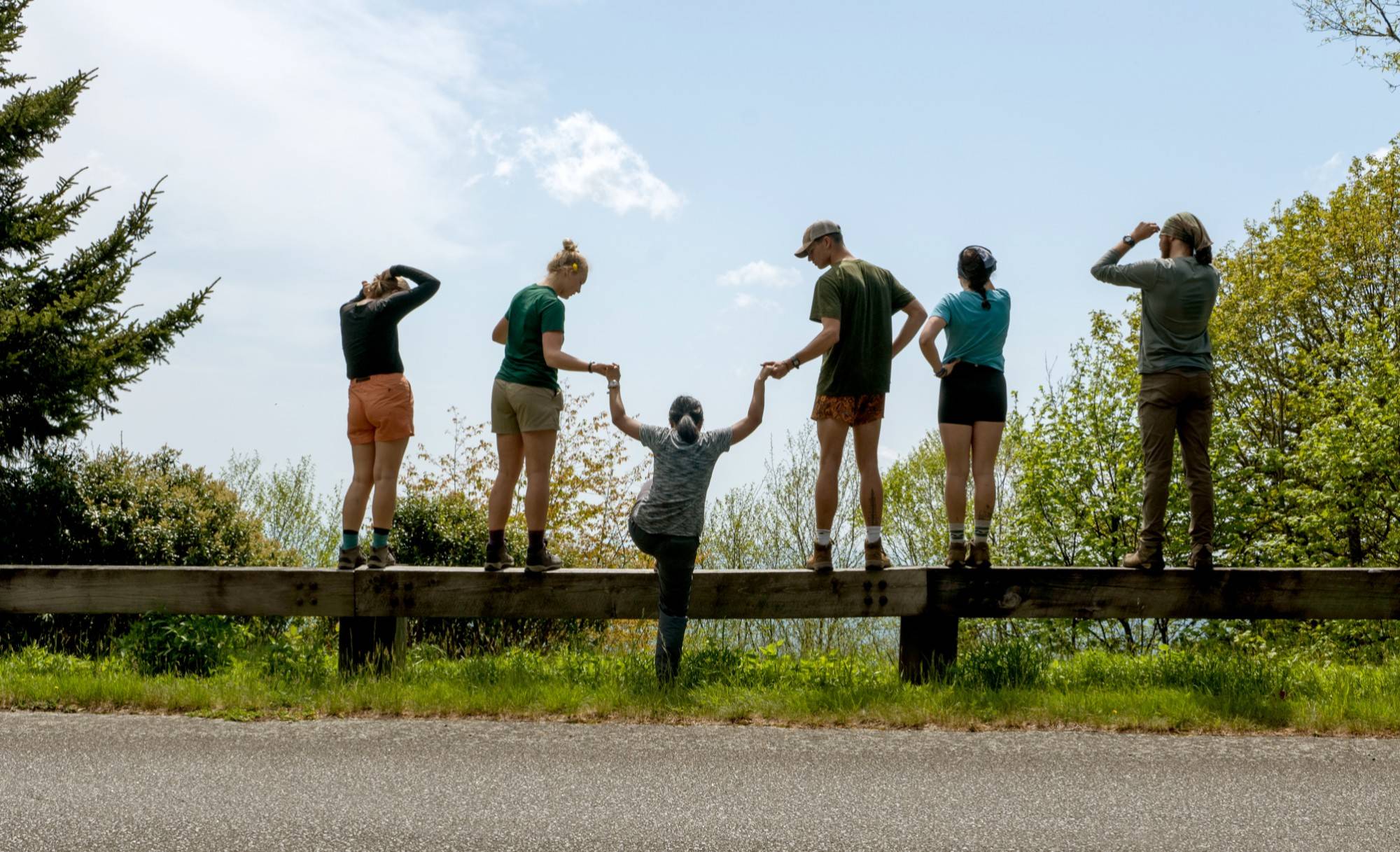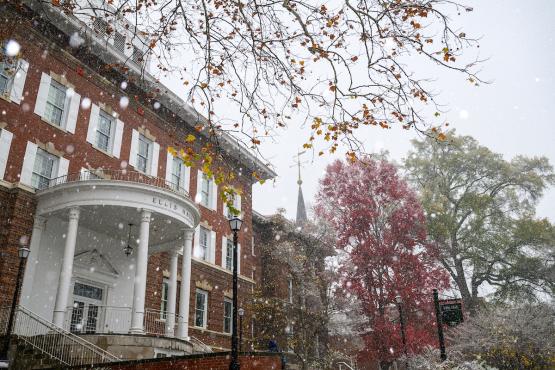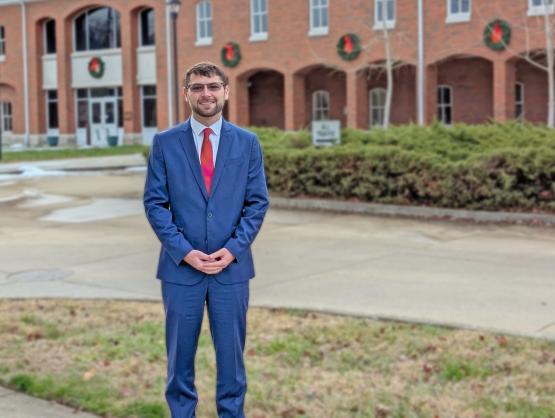Anew cohort of OHIO’s Outdoor Leadership(opens in a new window) program emerged from the wilderness. Dirty, grizzled and disheveled after a month-long adventure through the mountains and seas, these Bobcats learned much more than outdoor survival. While discovering their own limitations, they learned how to work as a team towards a collective goal through their many failings and subsequent triumphs along the way.
From May 14 to June 11, OHIO students embarked on a 28-day adventure through the Blue Ridge and Allegheny mountains and along North Carolina’s coastline. The program is designed to allow students to develop a deeper understanding of the knowledge, skills and dispositions required for effective outdoor leadership.
“Students should be leaving our program with a strong foundation of skill-based experiences in courses like backpacking, rock climbing, mountain biking, kayaking and canoeing,” said Joe Crowley, an assistant professor instruction who oversees the course. “But also professional level skills when it comes to things like collaborative work, management, budgeting. All of these are integral parts of our program.”
To have a successful experience, students need to demonstrate both self-reliance and an understanding of their own abilities, or lack thereof, as well as a collaborative attitude and trust towards fellow students as they work towards the same goals. Although these skills translate directly into a career of outdoor leadership, they are also skills that once learned, resonate through multiple aspects one’s life.
“Those kinds of challenges that we are all facing have a way of bringing the group together and creating a sense of community,” said Andrew Szolosi, an associate professor who has been leading the course for the past four years.
The program exists in three separate phases: backpacking the Pisgah National Forest of North Carolina; coastal kayaking Cape Lookout National Seashore in North Carolina; and bike-packing the Alleghany Highlands. It is open to all students regardless of previous outdoor experience. Students who successfully take the course earn nine credit hours and are awarded the Leave No Trace Trainer Certificate.
Anna Hattemer, a senior majoring in outdoor recreation in the Patton College of Education(opens in a new window), said the course left her with a deep sense of trust in herself, and the desire to continue to push herself through life’s obstacles, no matter how difficult.
“Taking this class really helped show me that I could do harder things,” she said.
Though she’s had a lifelong interest in the outdoors, prior to the trip she had only gone backpacking on two separate occasions. Because of her limited experience, she was reasonably intimidated about spending nearly a full month in the wilderness.
“The very first day I realized that this course was going to help me build my confidence,” she said.
Hattemer readily admits that the trip was at times difficult, challenging the limits of her physical and mental strength. Still, no matter the adversity, it provided Hattemer a continuous opportunity to overcome.
It was the most difficult moments that became Hattemer’s favorite memories. She was most nervous about the bike-packing portion of the trip. Having no prior experience, she was worried that it would end in total failure.
“That was my favorite part just because I proved myself wrong,” she said.
While on the trip she had to rely on herself, employing technical skills she learned like tying knots and purifying water. More importantly, however, she gained the confidence to work with — and when necessary, lead — new people. On the last day of the trip the class was dropped off on the trail and left by themselves for eight hours, relying on what they had learned for the past 27 days to survive.
“The whole trip is intimidating, and I still did it,” she said
After graduation Hattemer intends to start a career in the outdoors. Though she doesn’t have a concrete plan on what she will be doing, she hopes to move to Utah and perhaps start a career at the National Outdoor Leadership School(opens in a new window). She wants to help empower young women to recreate in the outdoors comfortably and inspire people to enjoy the peaceful solitude of nature.
“Trust yourself and know that the outdoors are built for everyone,” she said.
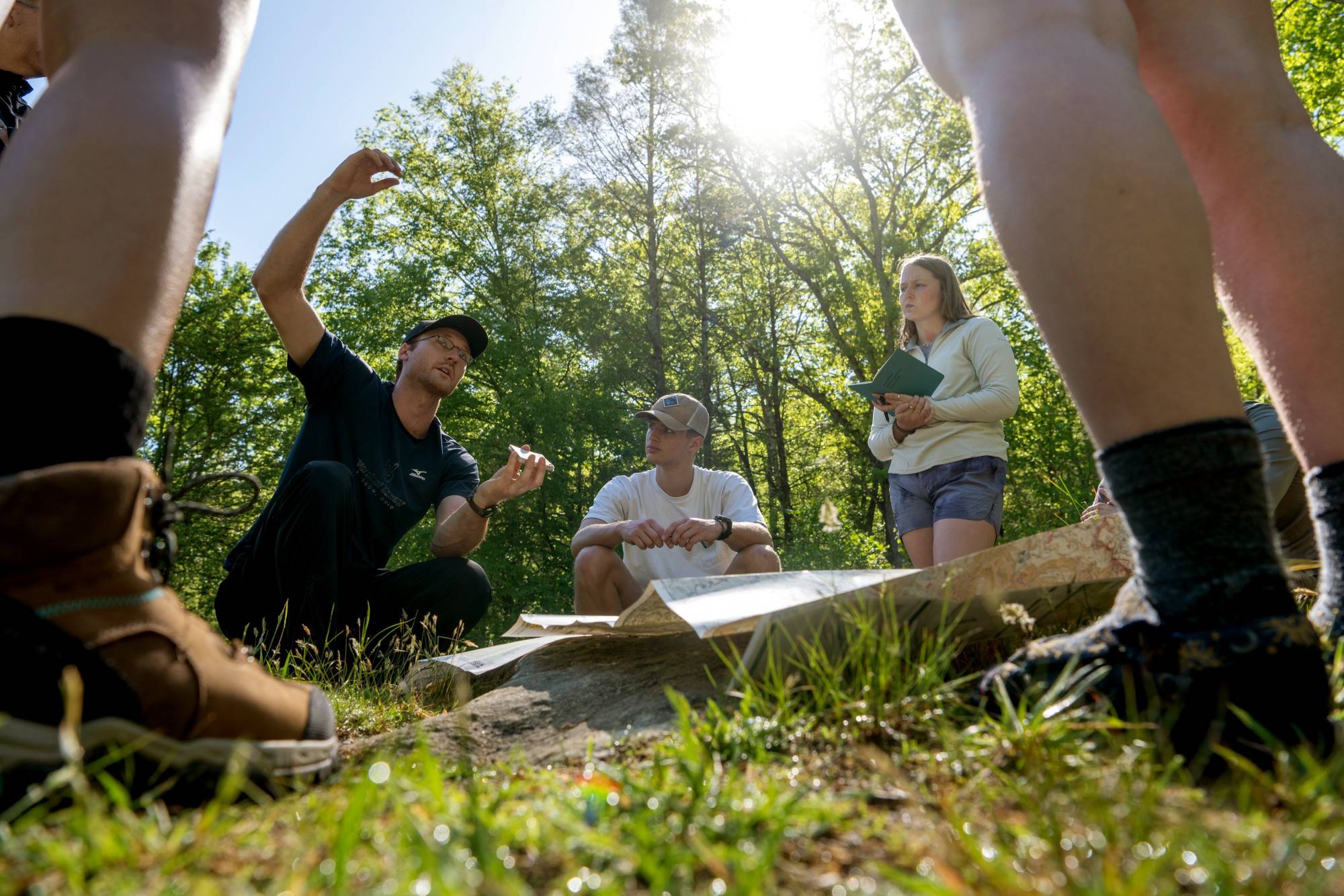
Kevin Osborne leads a navigation lesson at the start of the backpacking portion of the class.
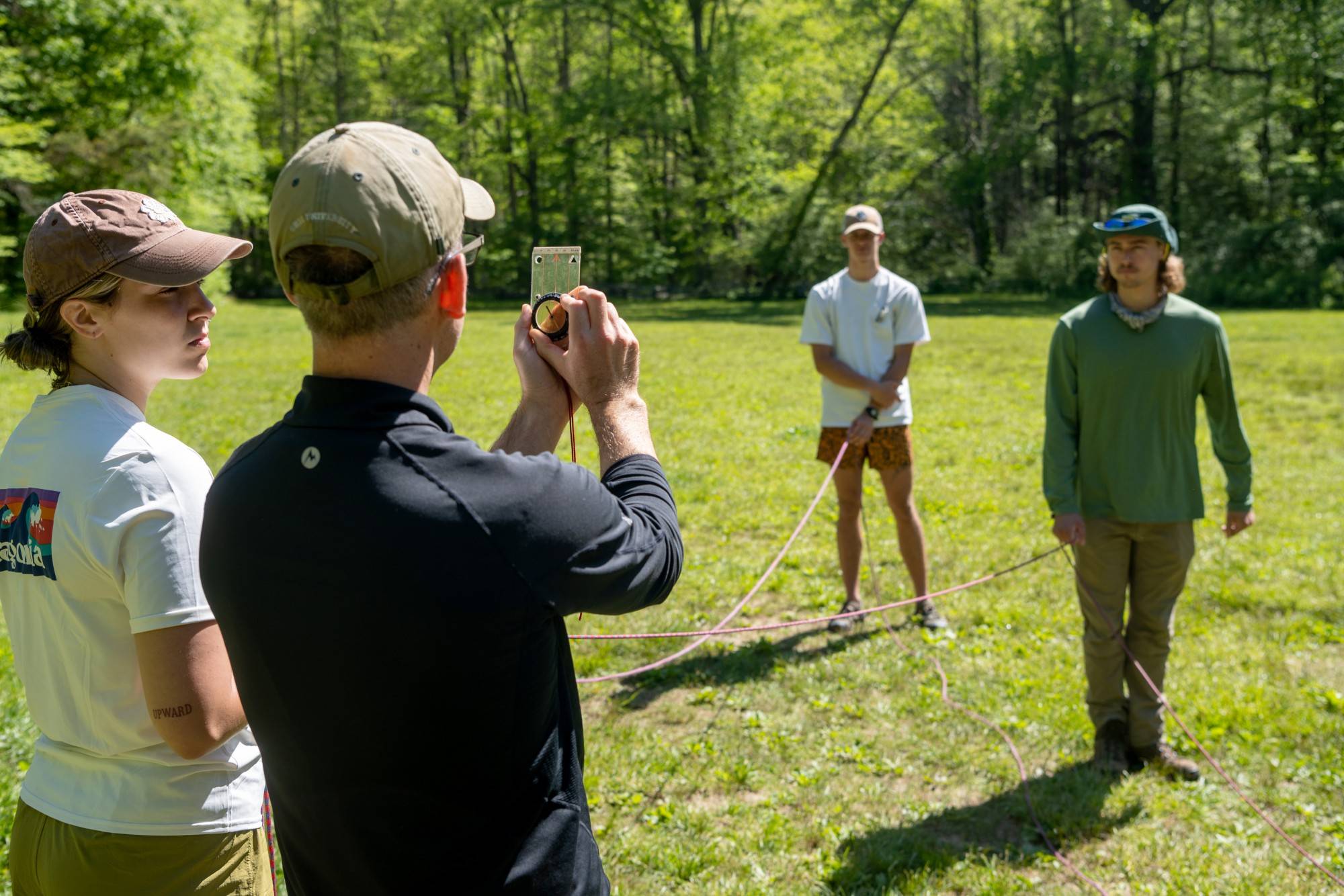
Associate Professor Andy Szolosi teaches students how to adjust their compasses for magnetic declination using climbing ropes as visual aides.
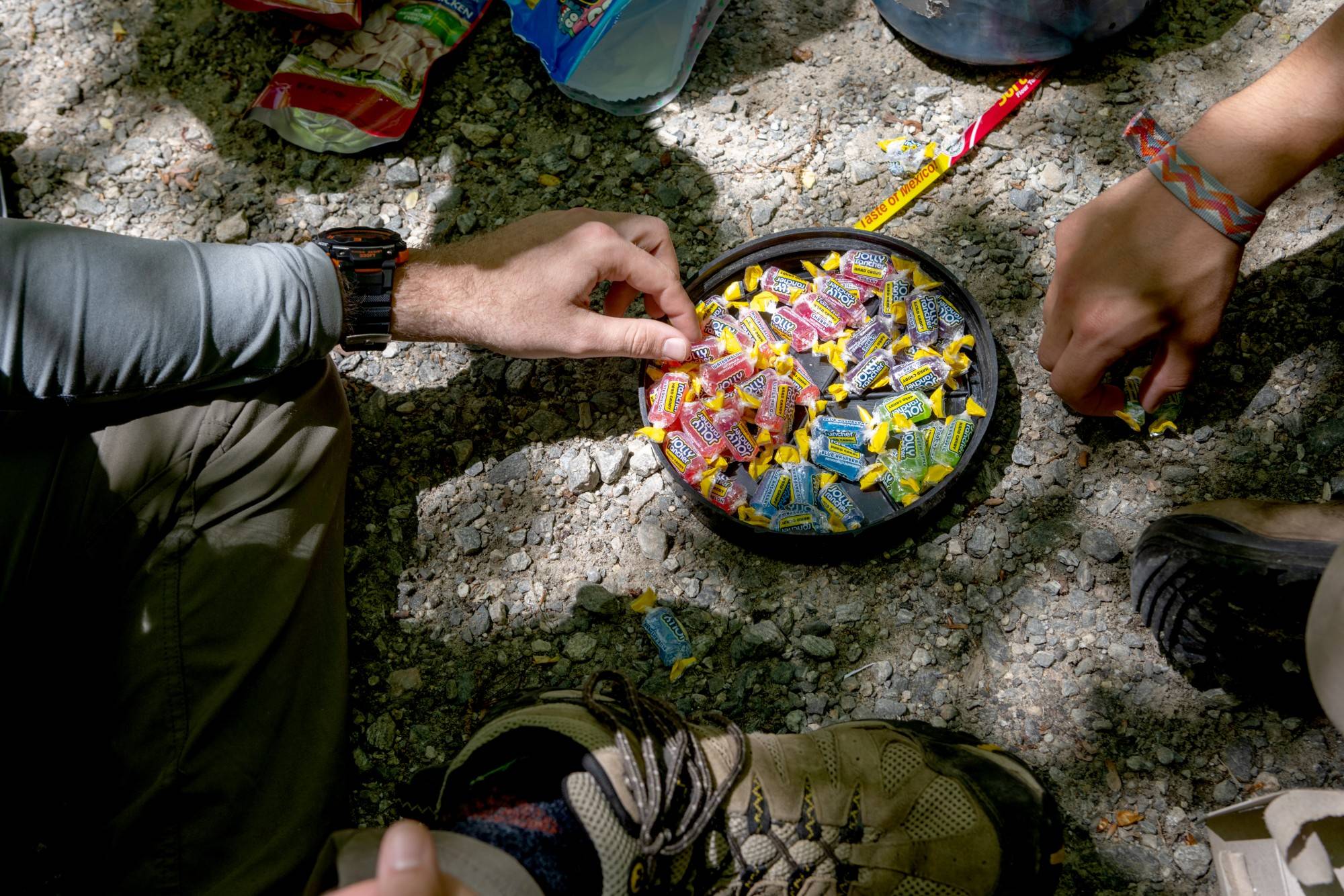
Students were empowered to decide what they needed to pack based on what they were willing to carry in their backpacks. As part of this process, this group takes turns choosing their favorite flavors from a bag of Jolly Ranchers.
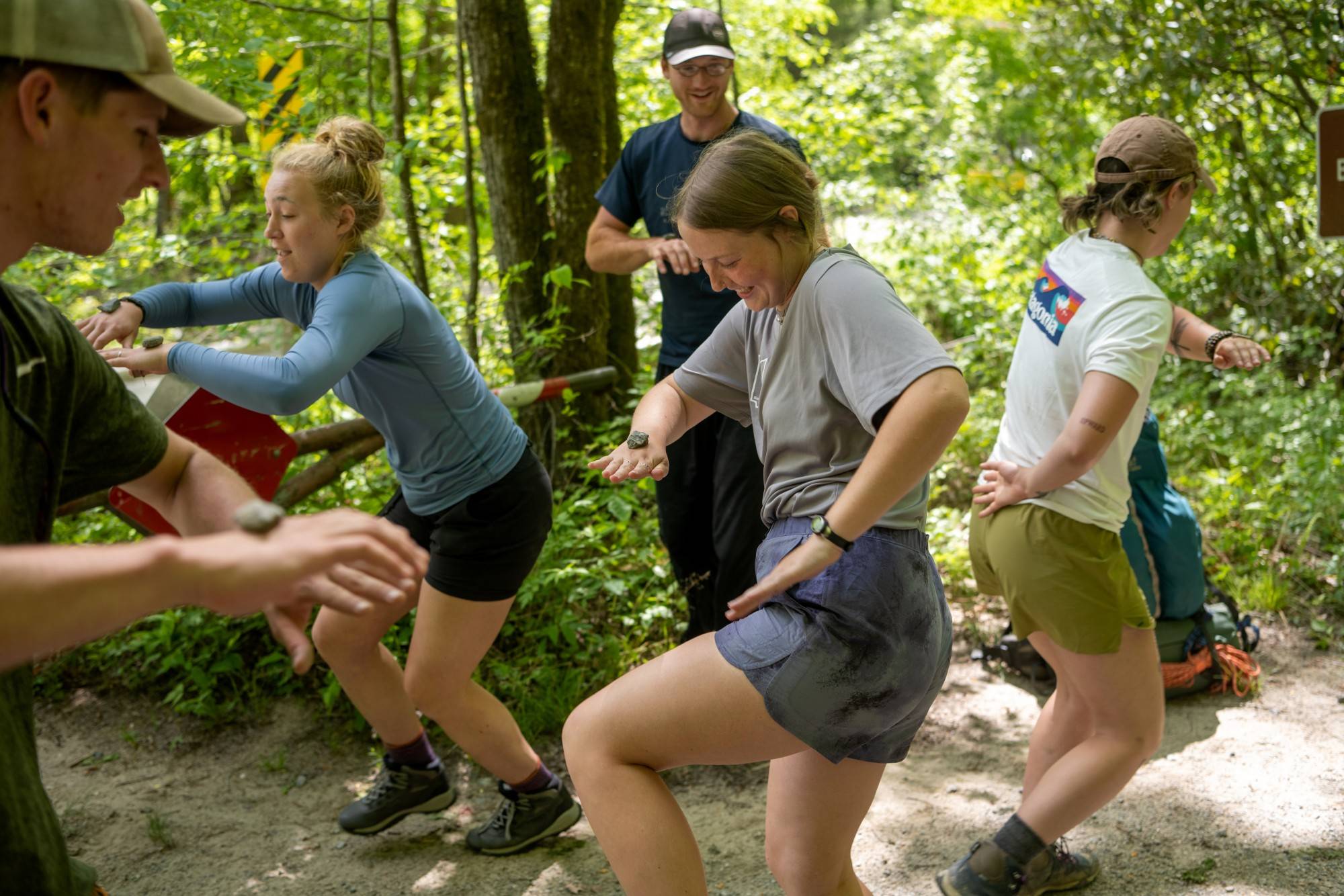
Graduate student Kevin Osborne (top center) leads the group in a game of Rocky Handy. Osborne said, "Part of being a leader is knowing when your team needs to have some fun. Rocky Handy became a favorite game to play during down times. These moments allowed students to laugh, be silly and relax with their one another. The bonds built during these games allowed the class to work together and face significant challenges as a group."
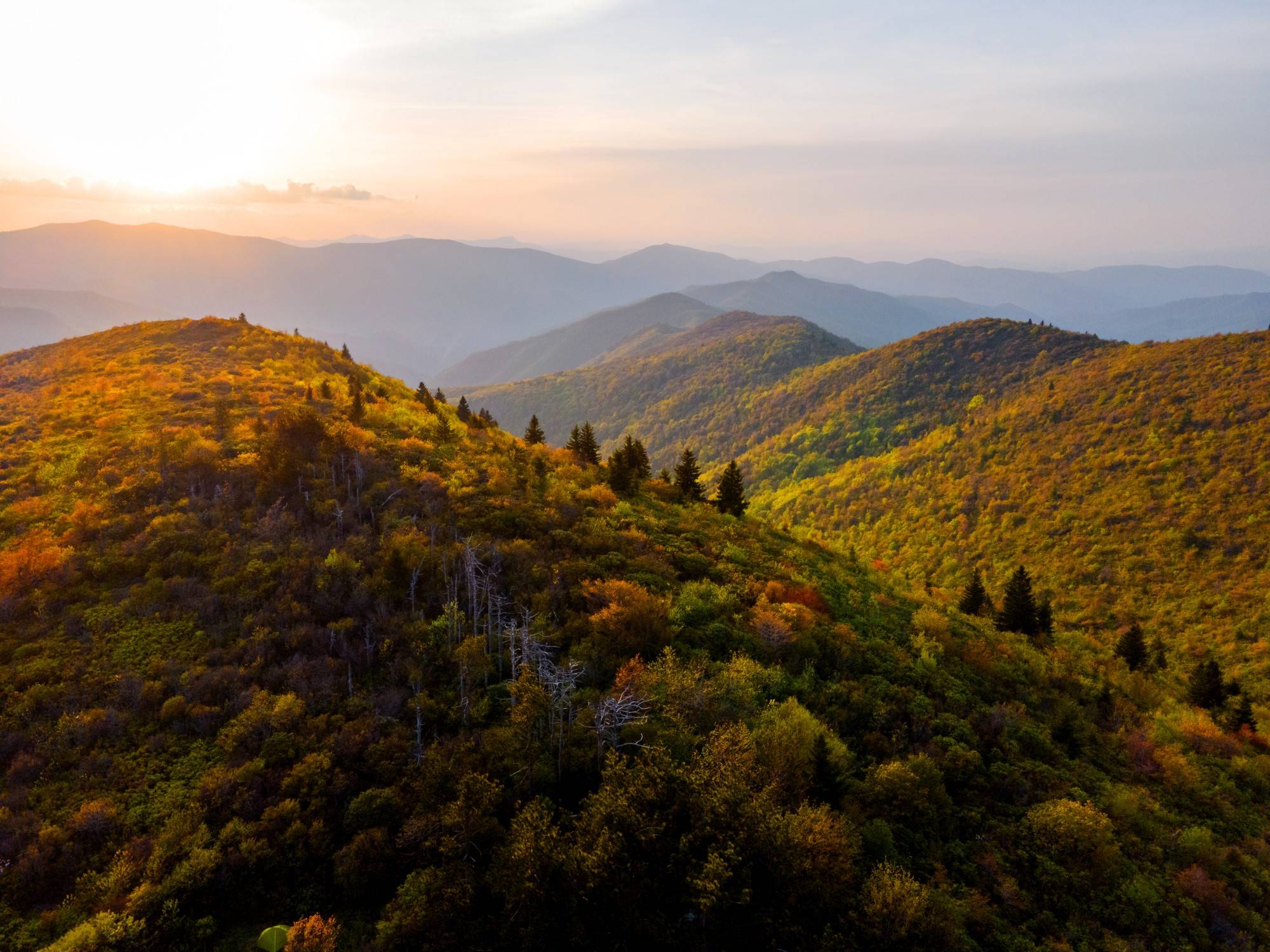
Pisgah National Forest at sunset.
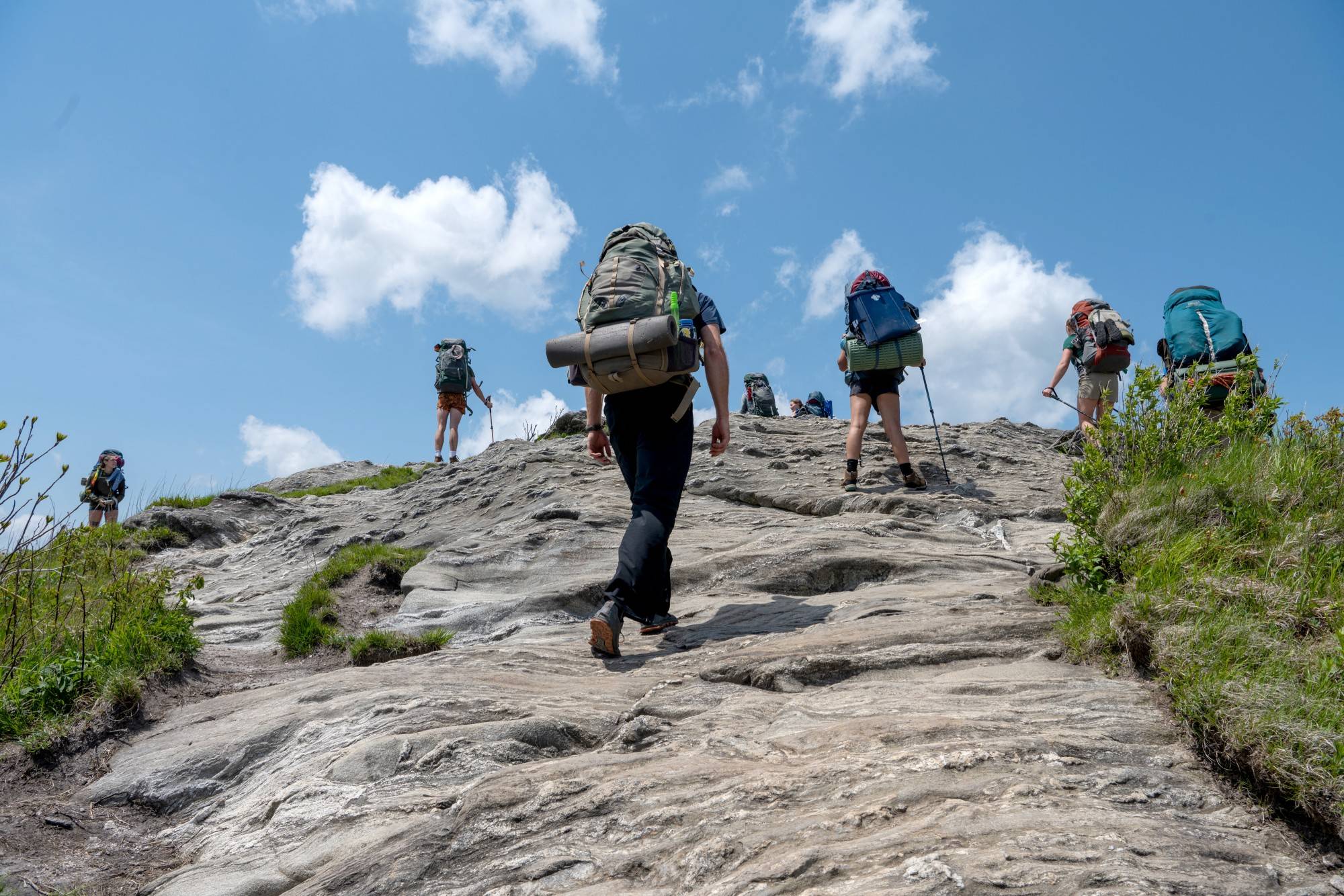
Students make their way up Black Balsam.
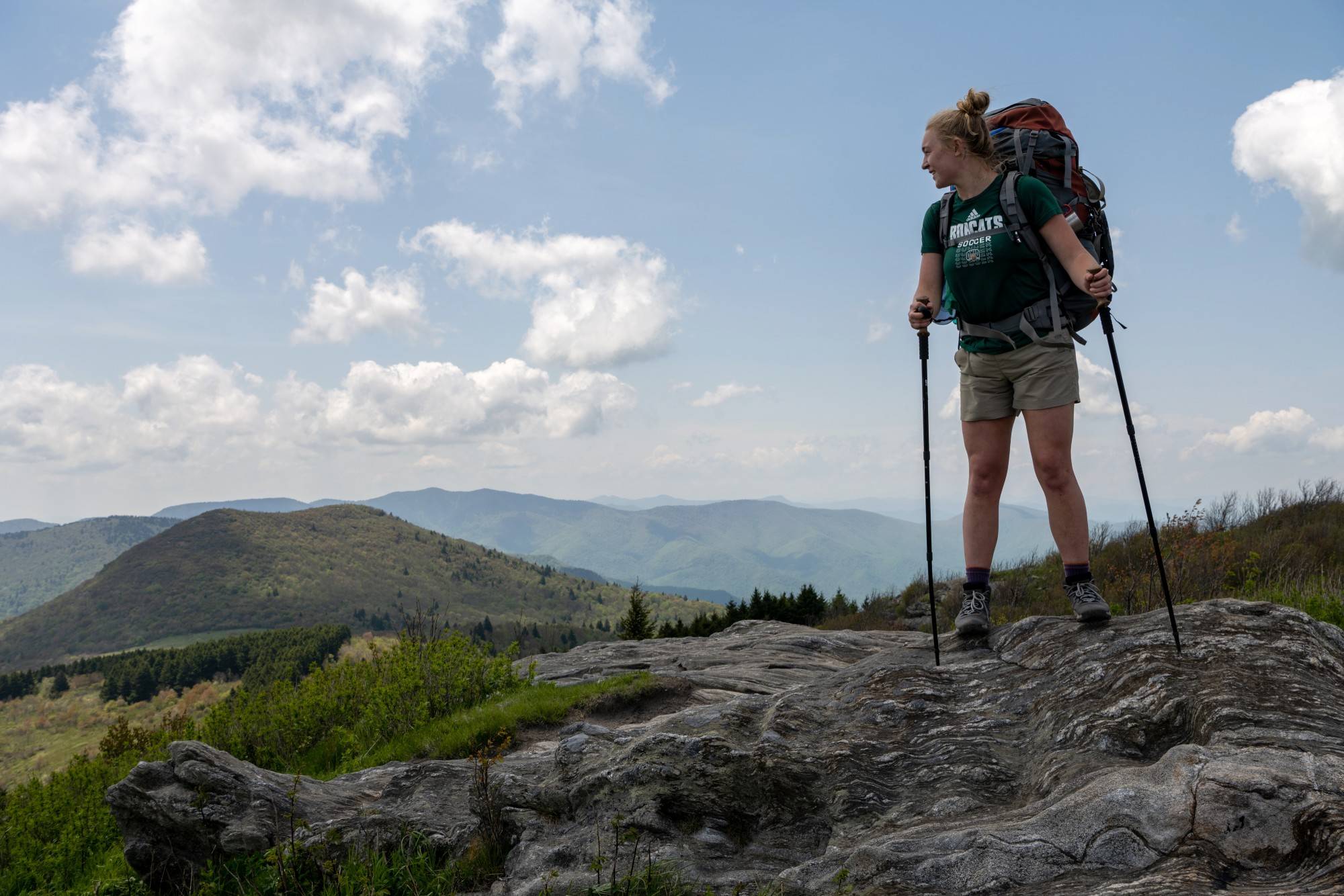
Reagan Berg takes in the view at Black Balsam in the Pisgah National Forest.
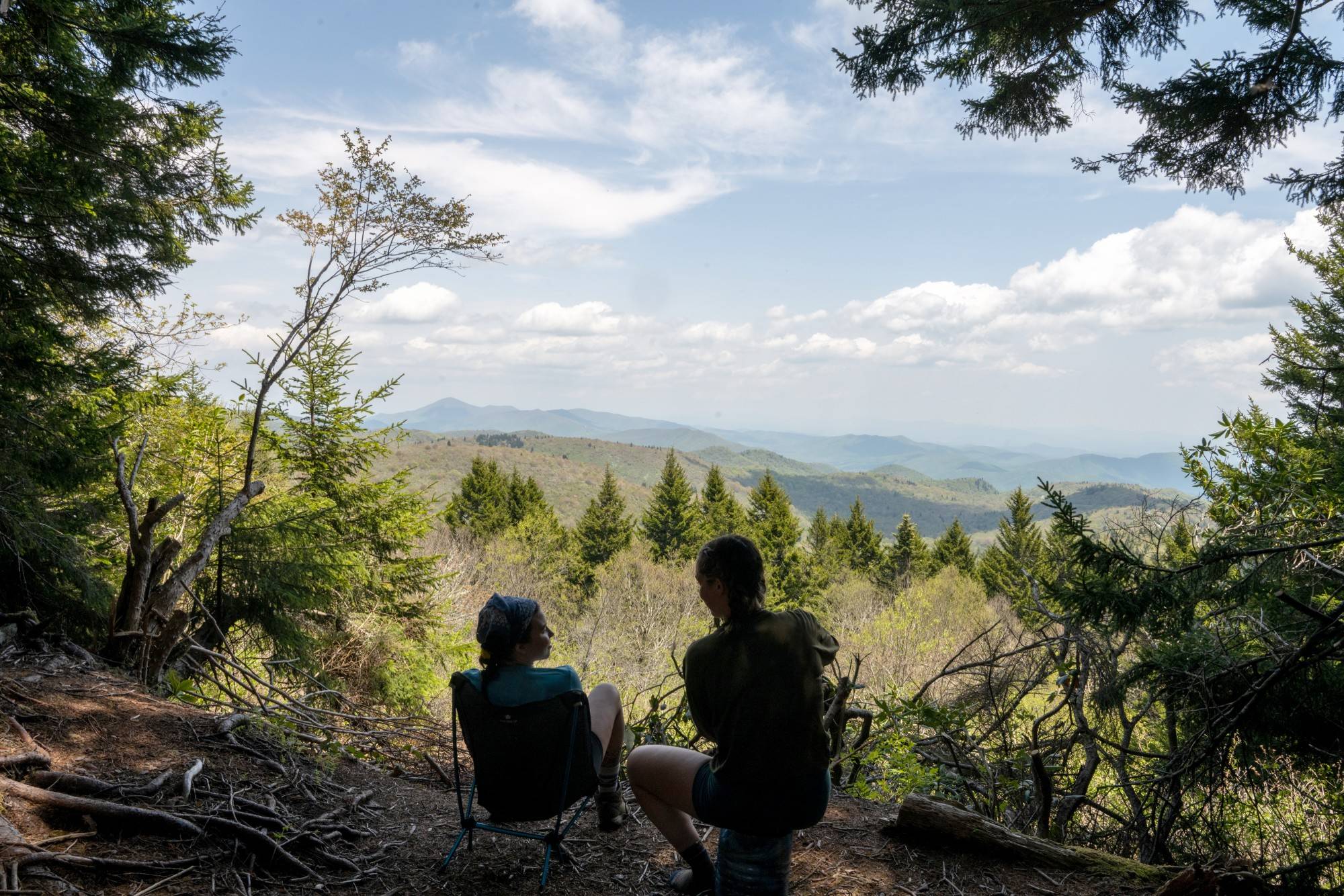
Emelia Adams (left) and Autumn Warren enjoy the scenery during a lunch break.
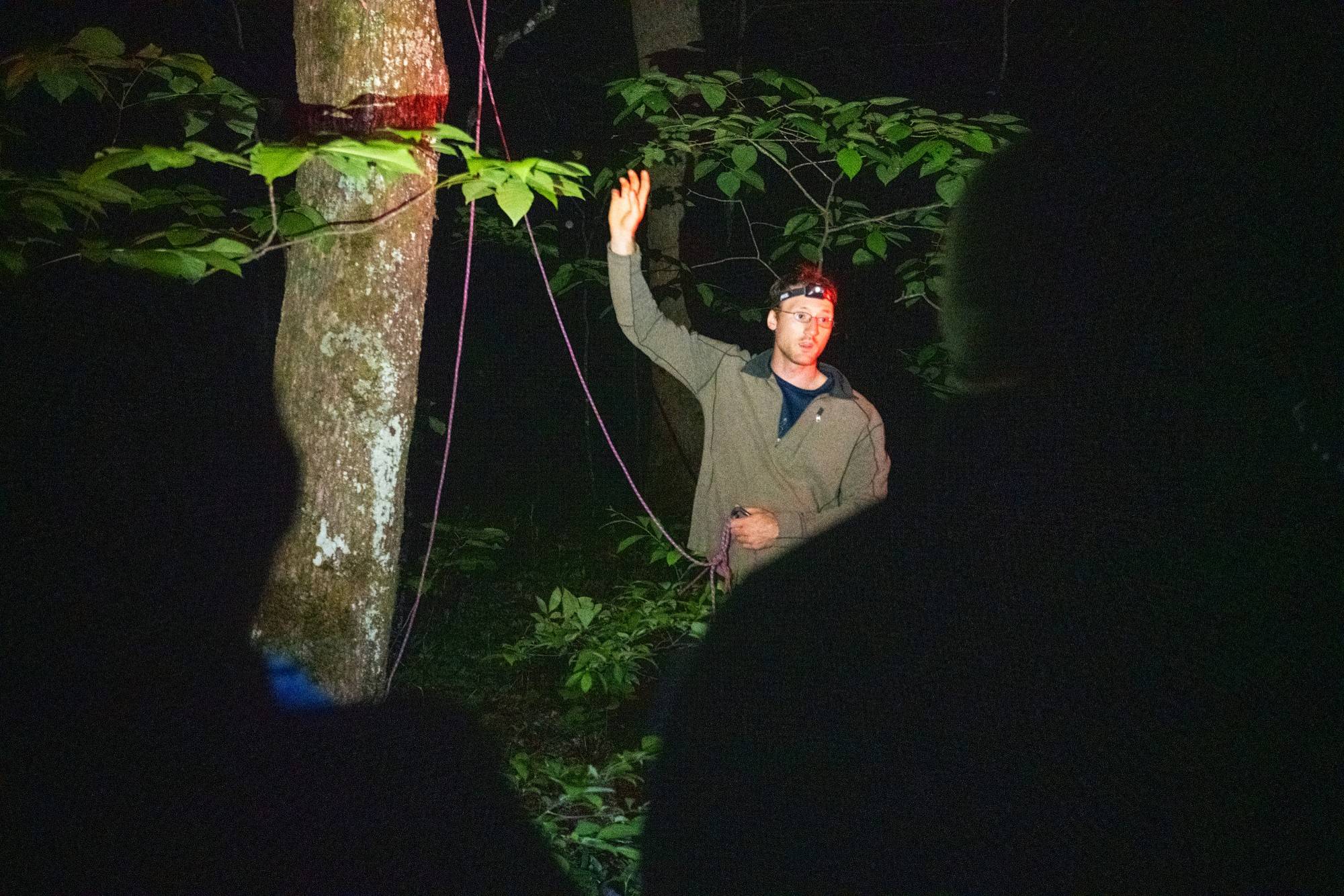
Kevin Osborne instructs the group how to hang bear bags.
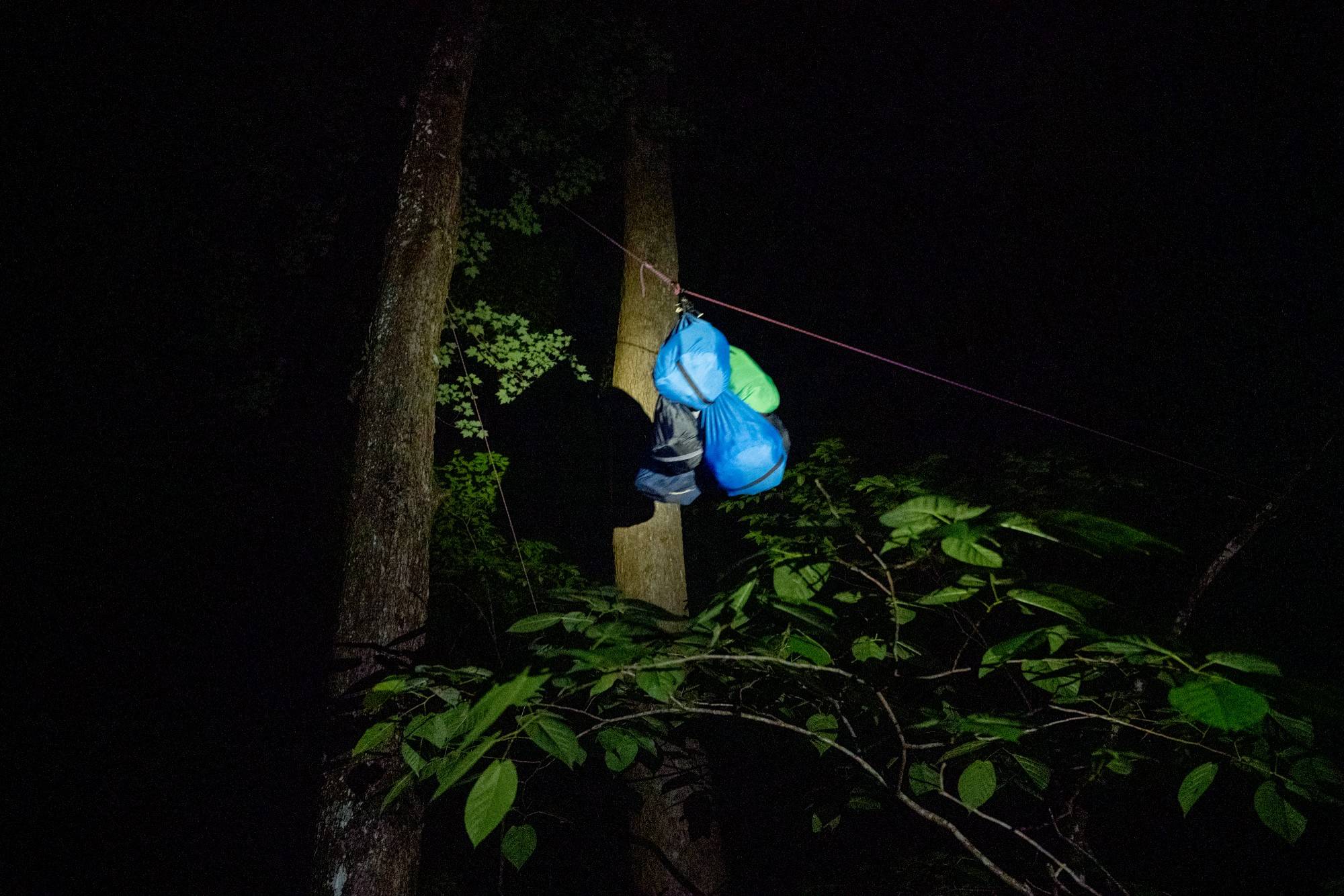
Every night students had to hang their food and anything else that might attract bears at least ten feet off of the group, at a location away from camp.
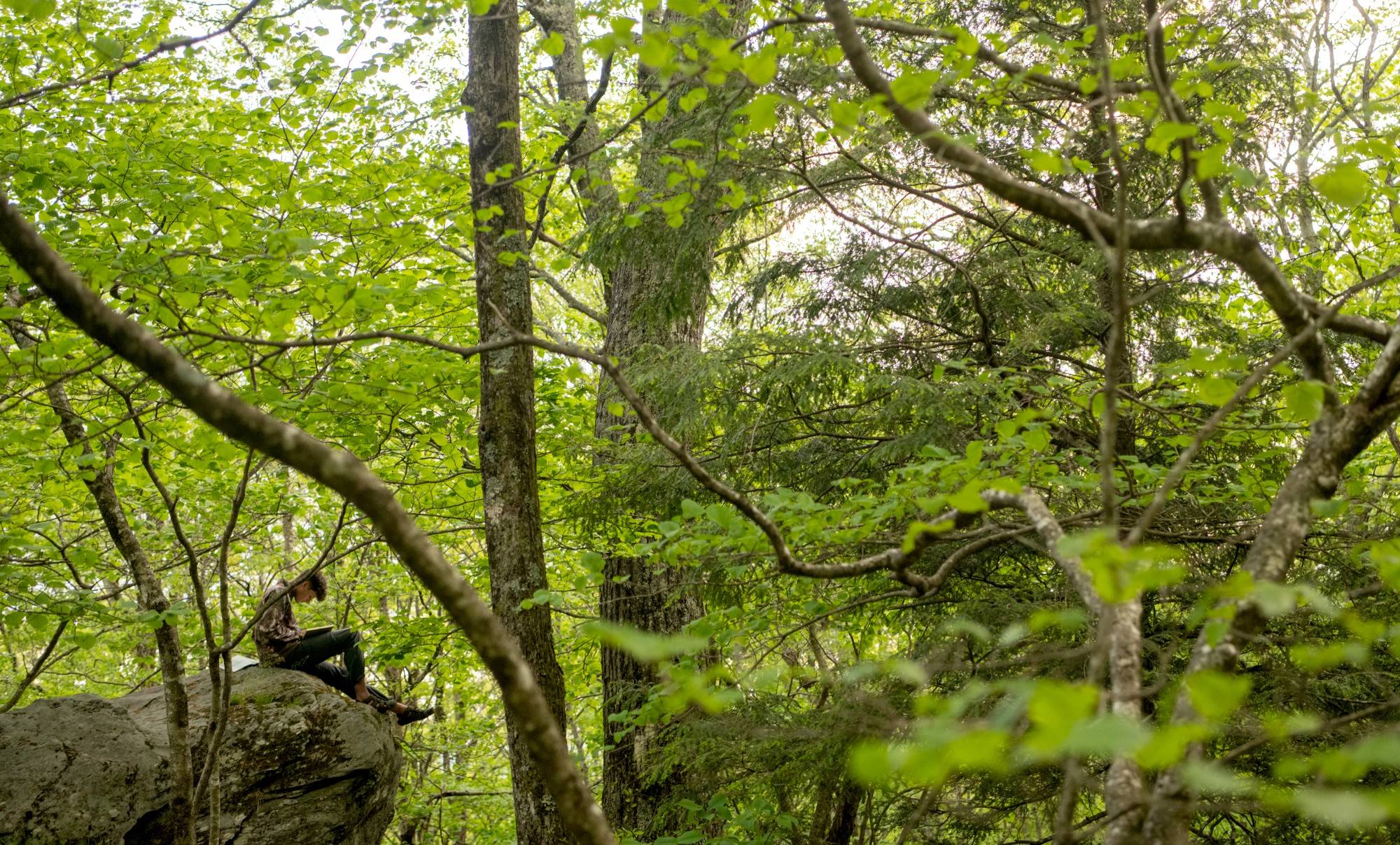
Andrew Lewis journals after arriving at a camp site on the Art Loueb Trail in the Pisgah National Forest.
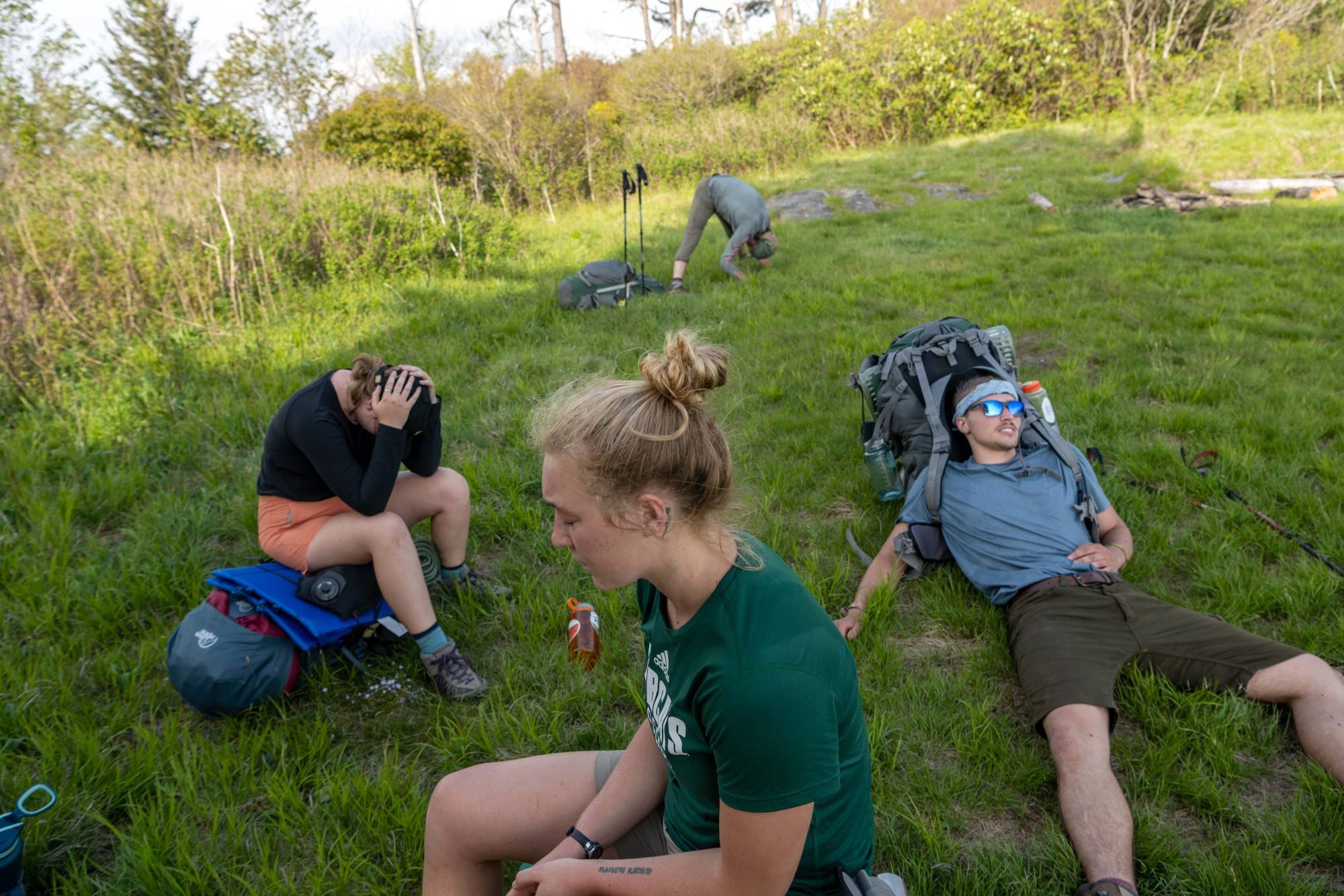
Students take a 15-minute break at the end of a long day of hiking.
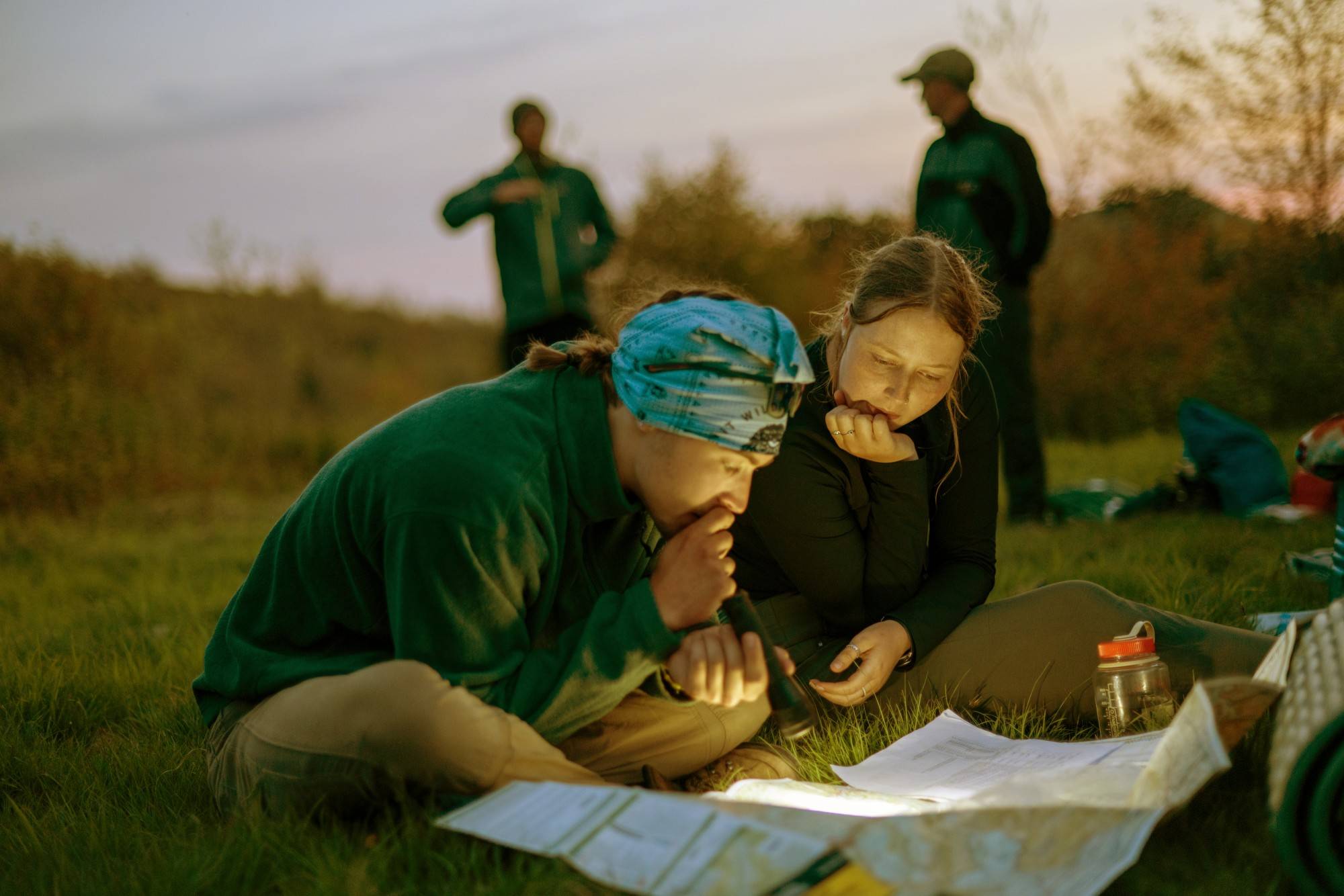
Garrison Beale (left) and Anna Hattemer discuss a plan for their turn leading the class. Every student takes turns leading the different days of the trip with minimal advance notice.
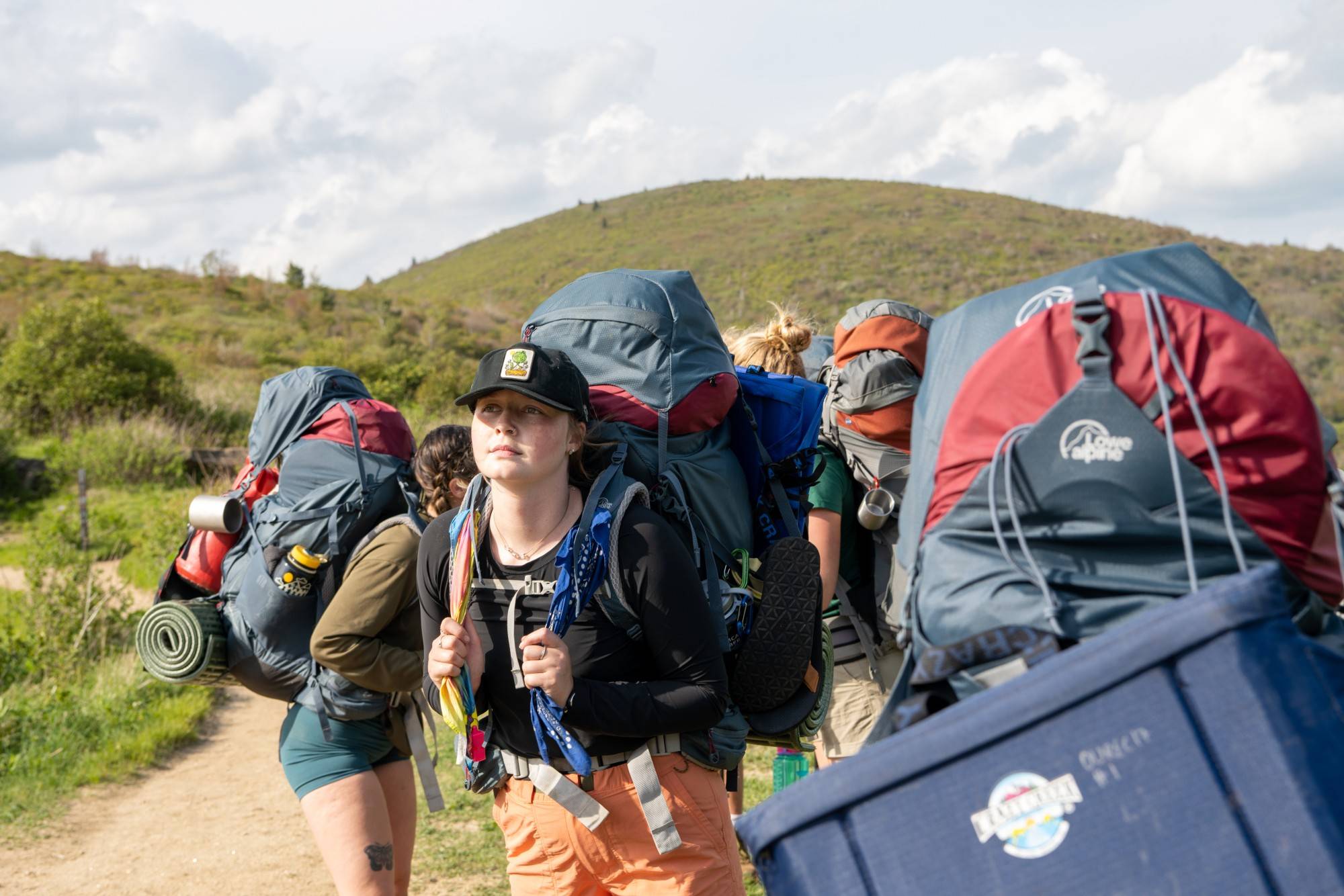
Anna Hattemer prepares to hike the next section of the backpacking trip.
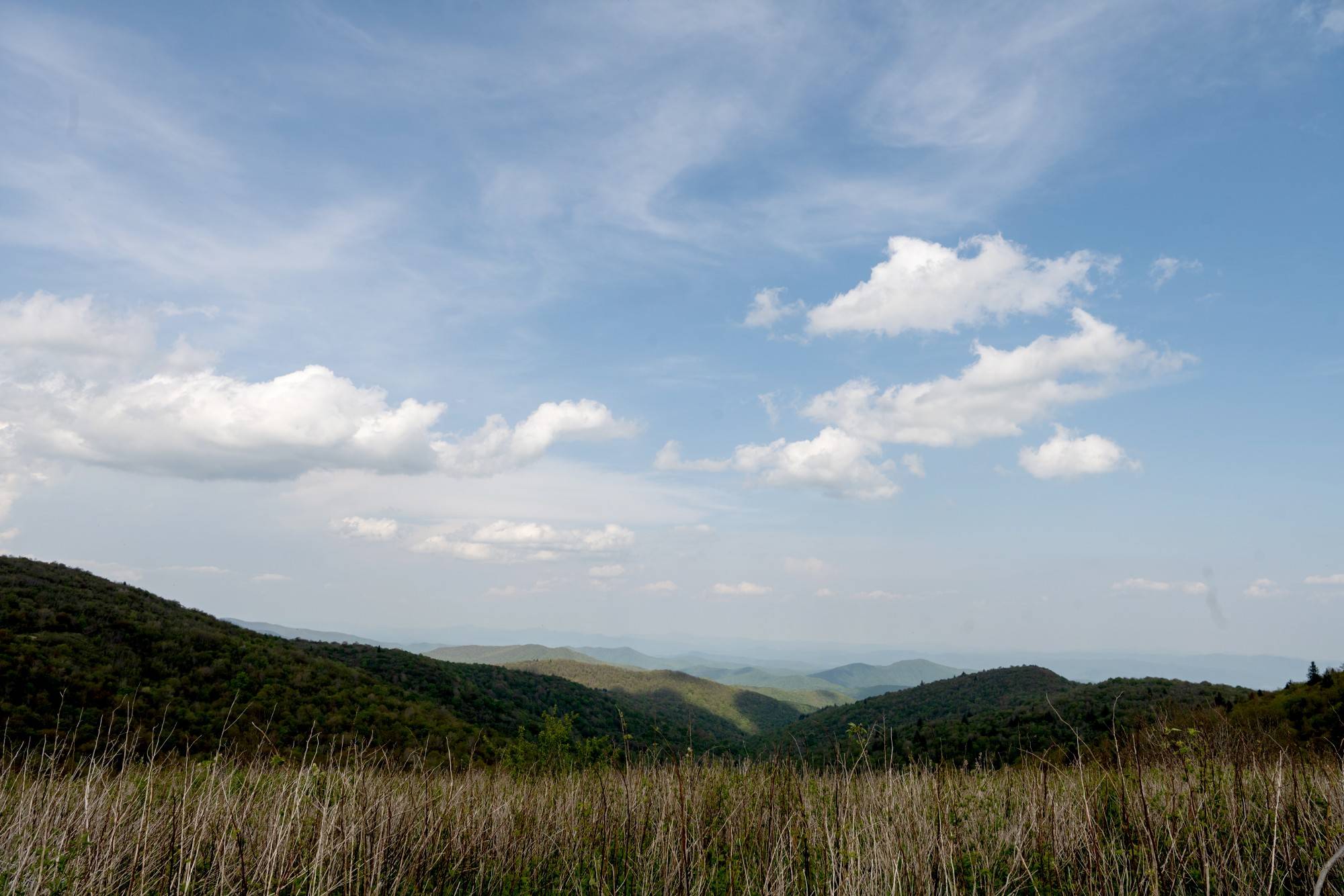
Pisgah National Forest is comprised of more than 500,000 acres and hundreds of miles of trails in western North Carolina.
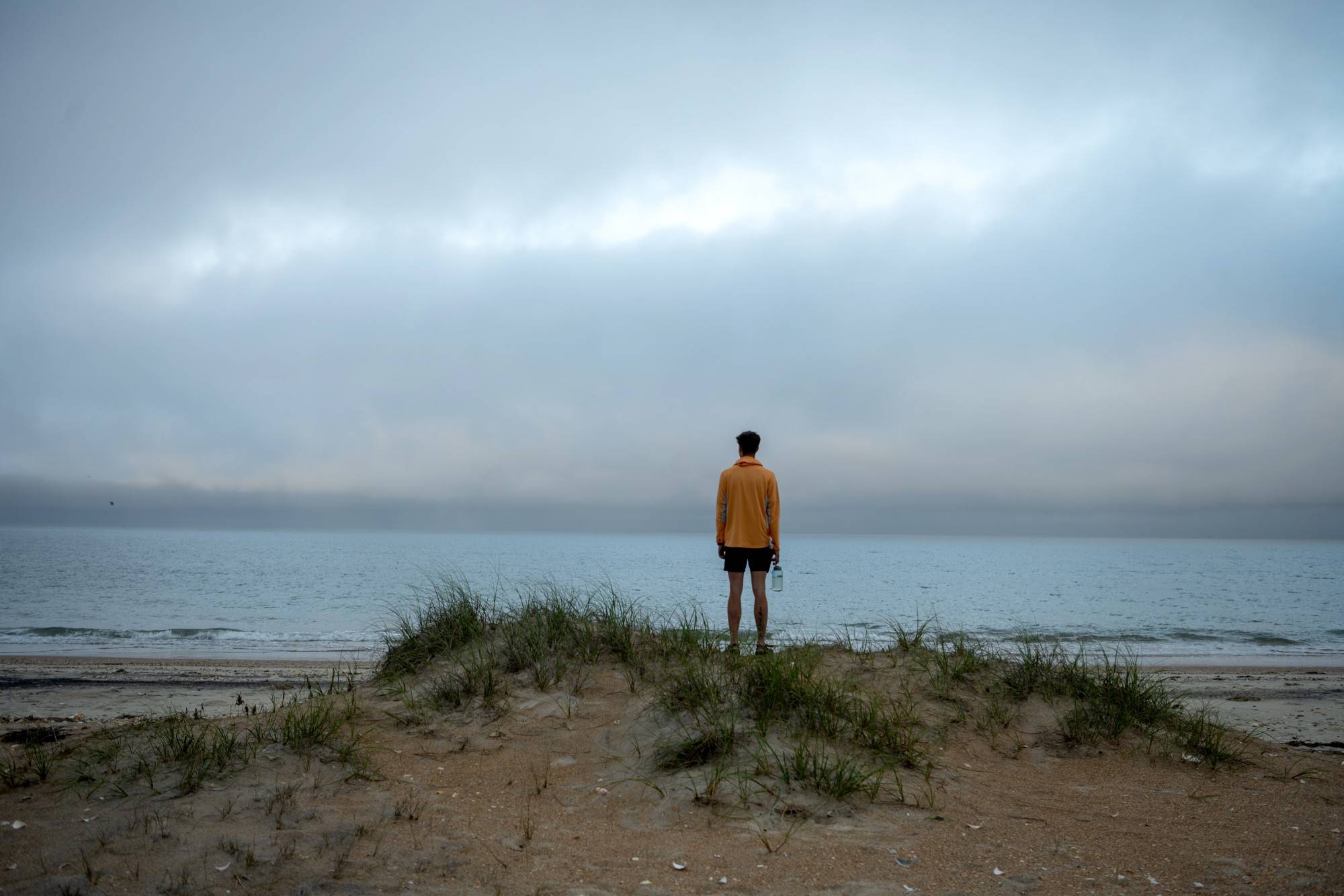
Andrew Lewis takes in the ocean view at sunset shortly after arriving in the Outer Banks for the second portion of the outdoor leadership course.
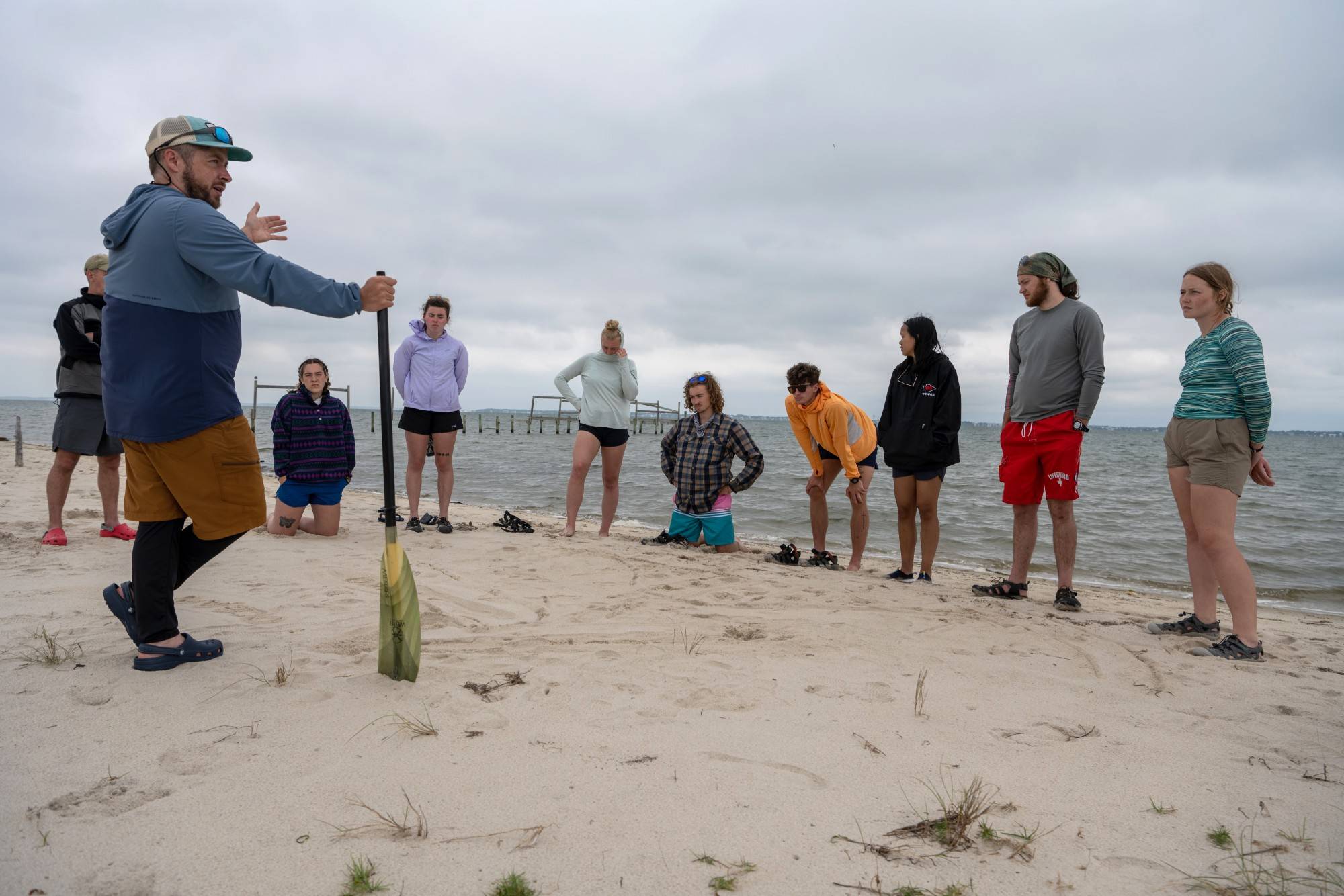
Associate Professor Joe Crowley teaches the class of about tidal currents and their impact on the trip planning for the sea kayaking portion of the class.
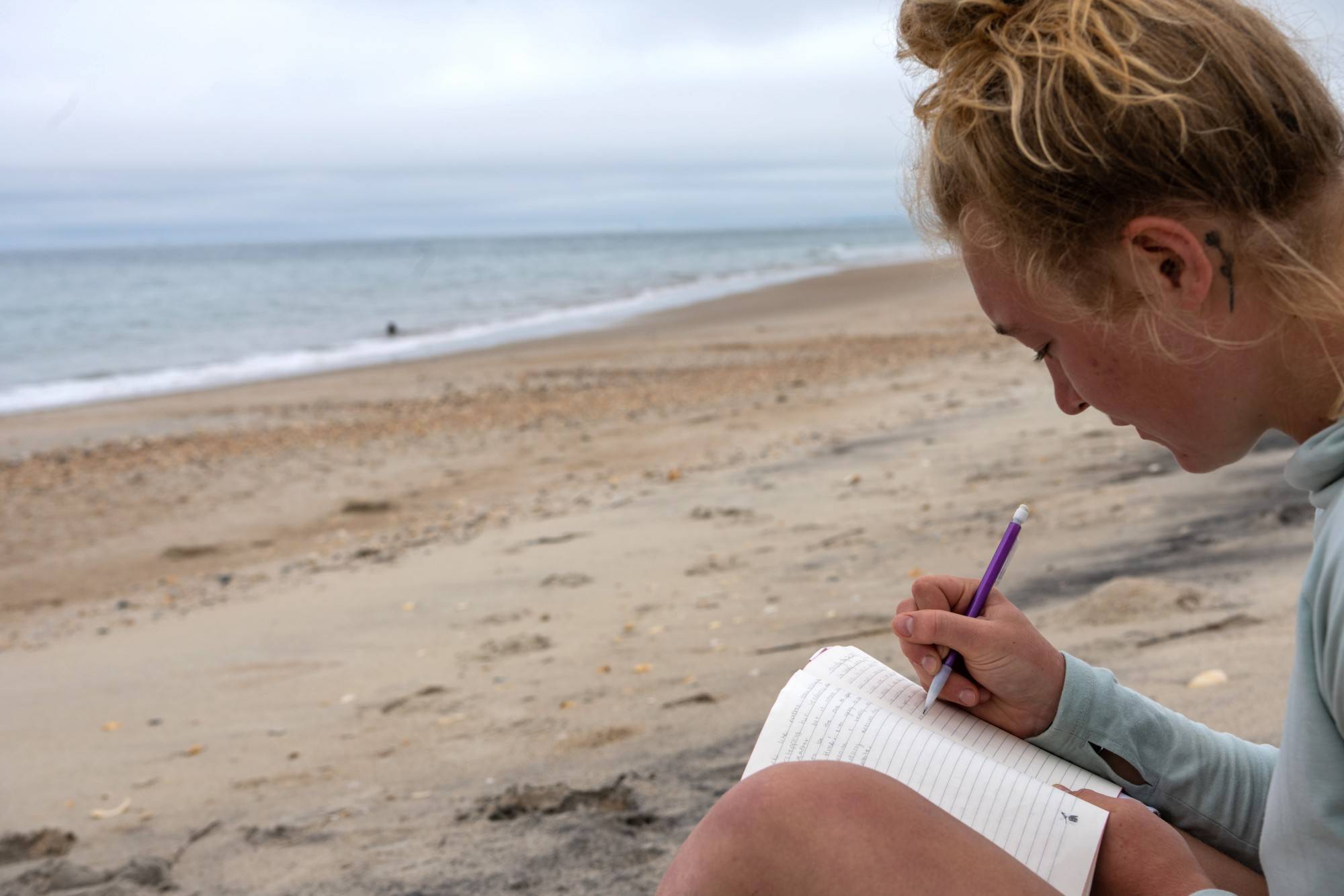
Reagan Berg journals on the beach at Shackleford Banks.
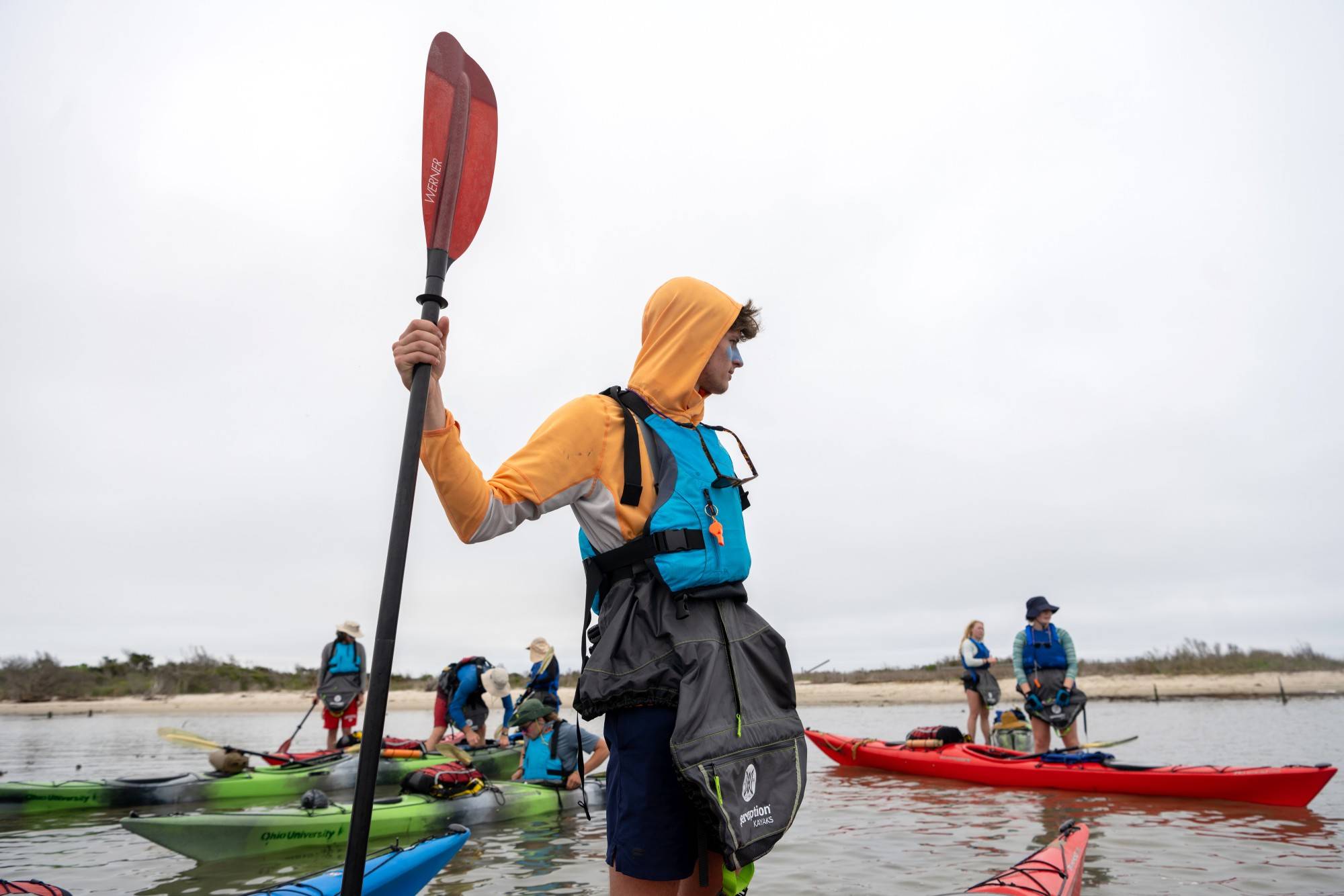
Andrew Lewis prepares to paddle to the Cape Lookout Lighthouse.
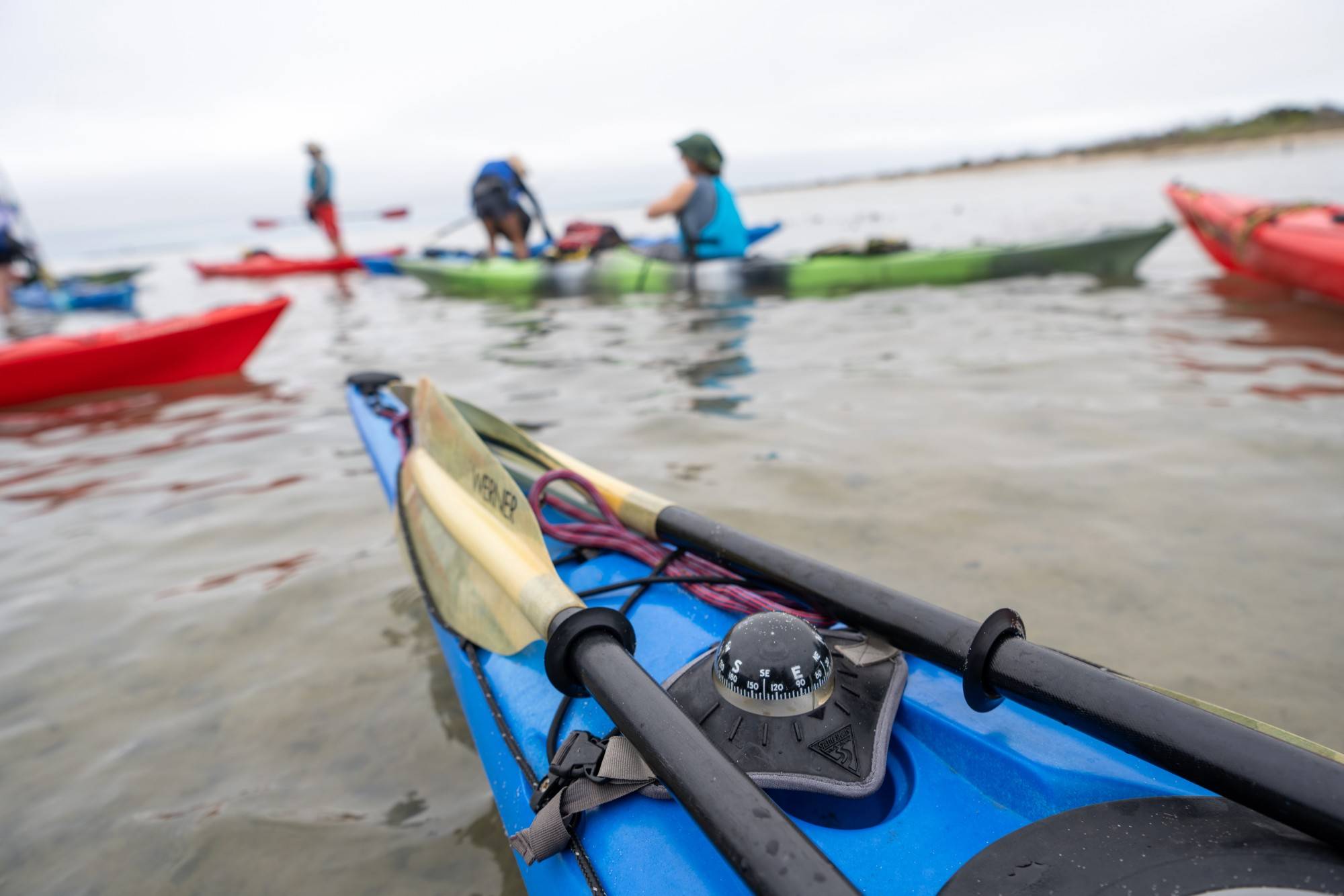
Students learn to navigate waterways using a compass and a map.
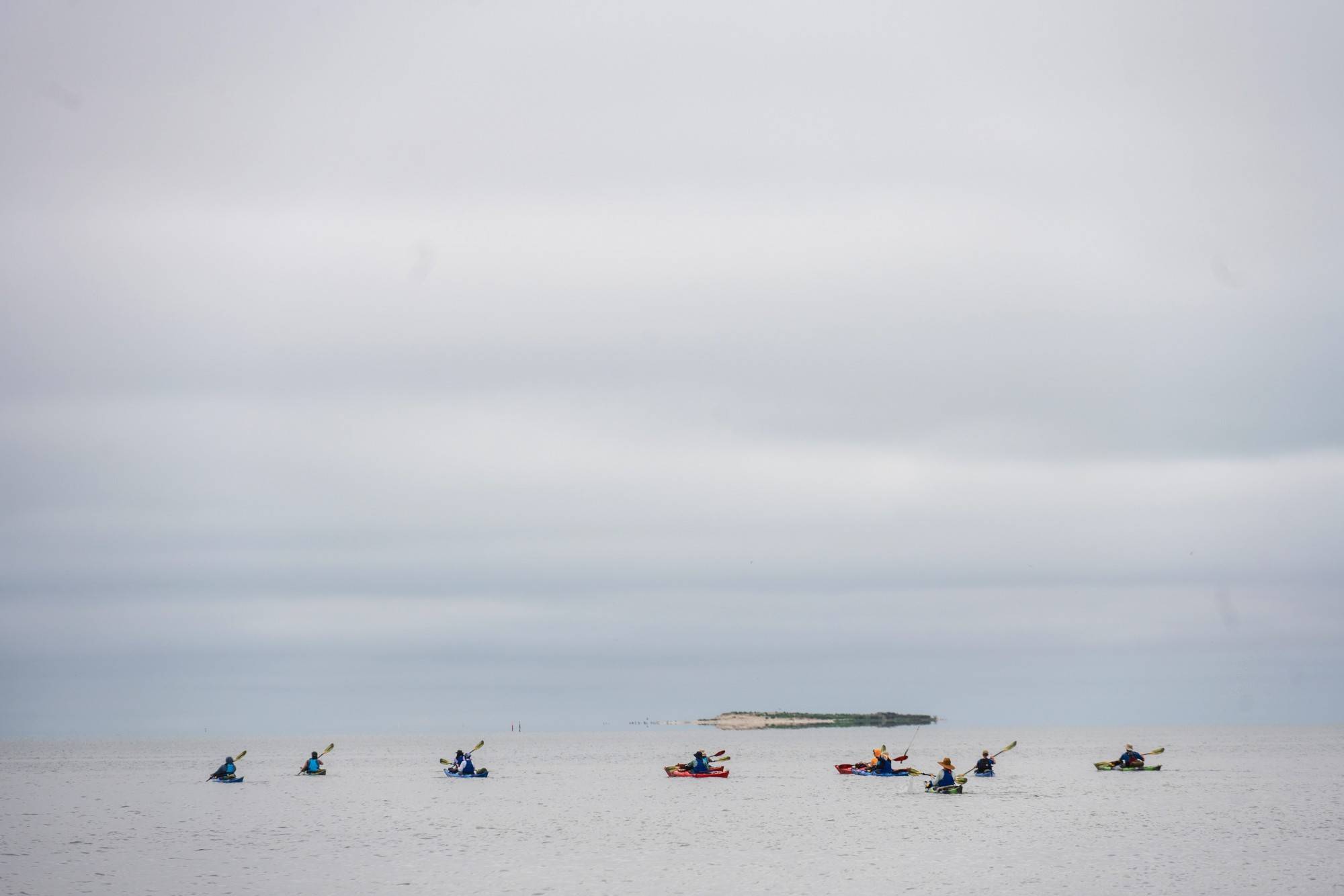
The outdoor leadership class spent eight days paddling from Harkers Island to Cedar Island in the Outer Banks in North Carolina.

Students camped on the beach in mostly unpopulated parts of the Cape Lookout National Seashore.
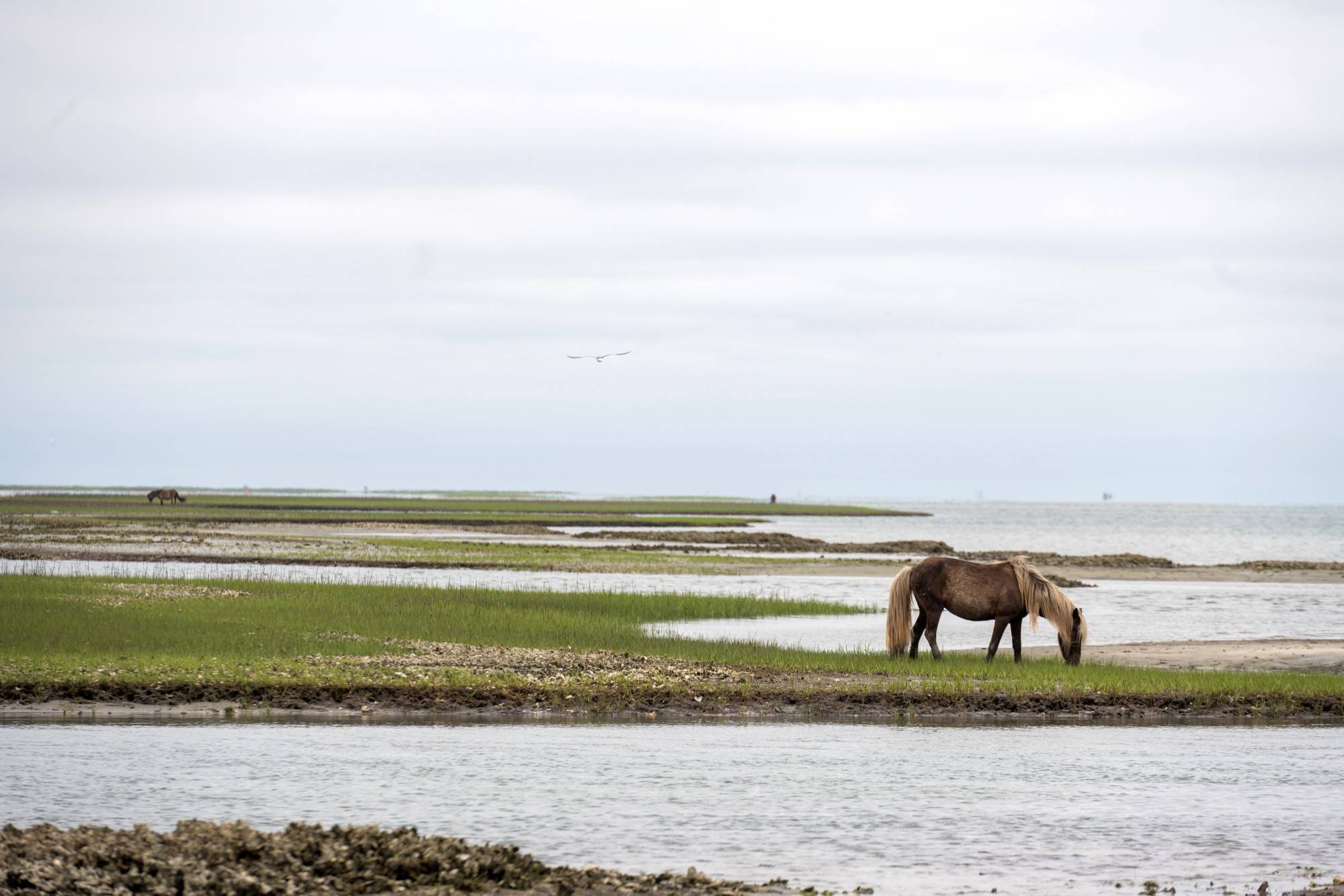
Wild horses roamed at Shackleford Banks where the class camped during the first night of the sea kayaking portion of the trip.
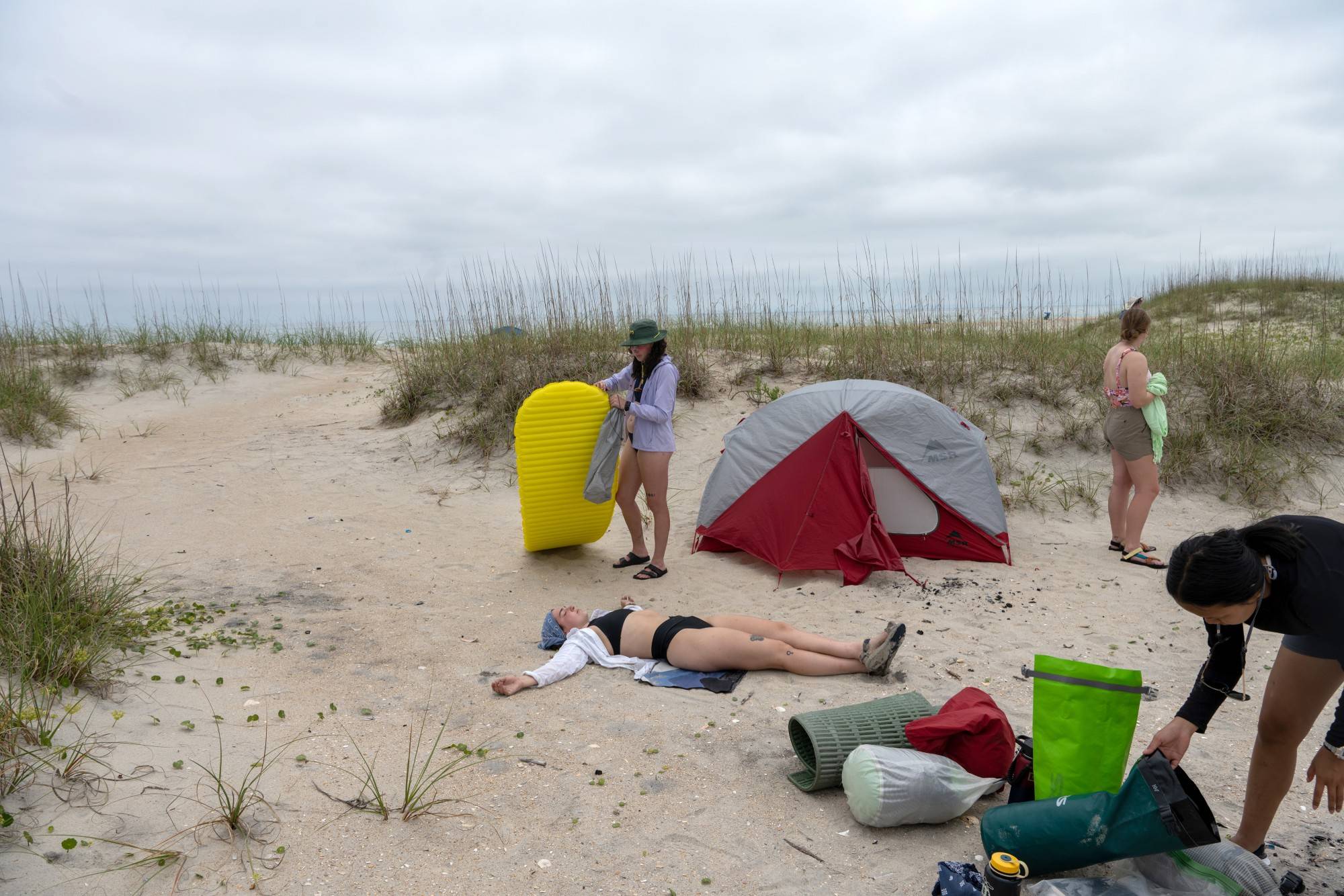
Students camped in the shadow of Cape Lookout Lighthouse on the third night in the Outer Banks. Autumn Warren rests for a moment after pitching her tent on the beach.
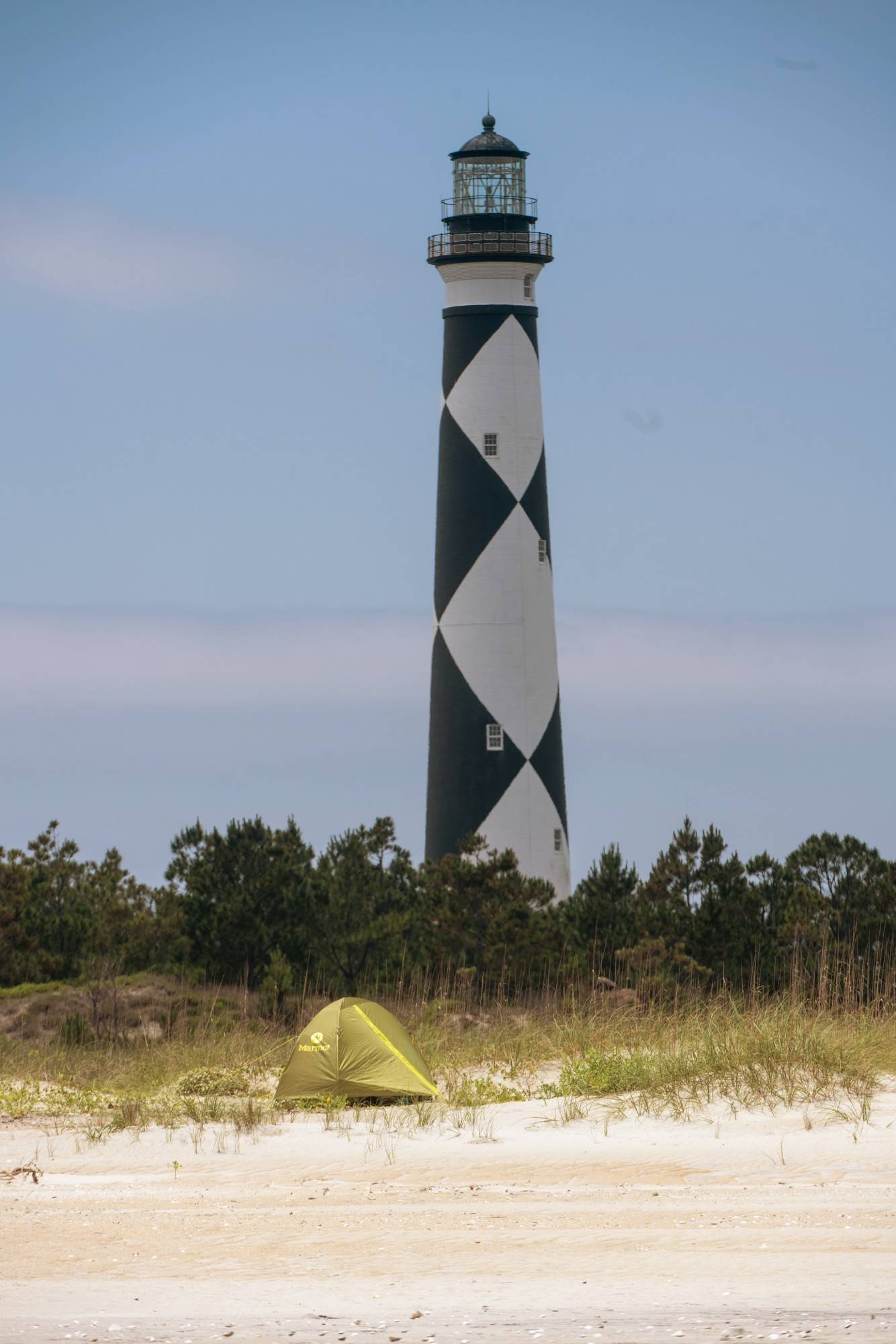
Students camped in the shadow of Cape Lookout Lighthouse on the third night in the Outer Banks.
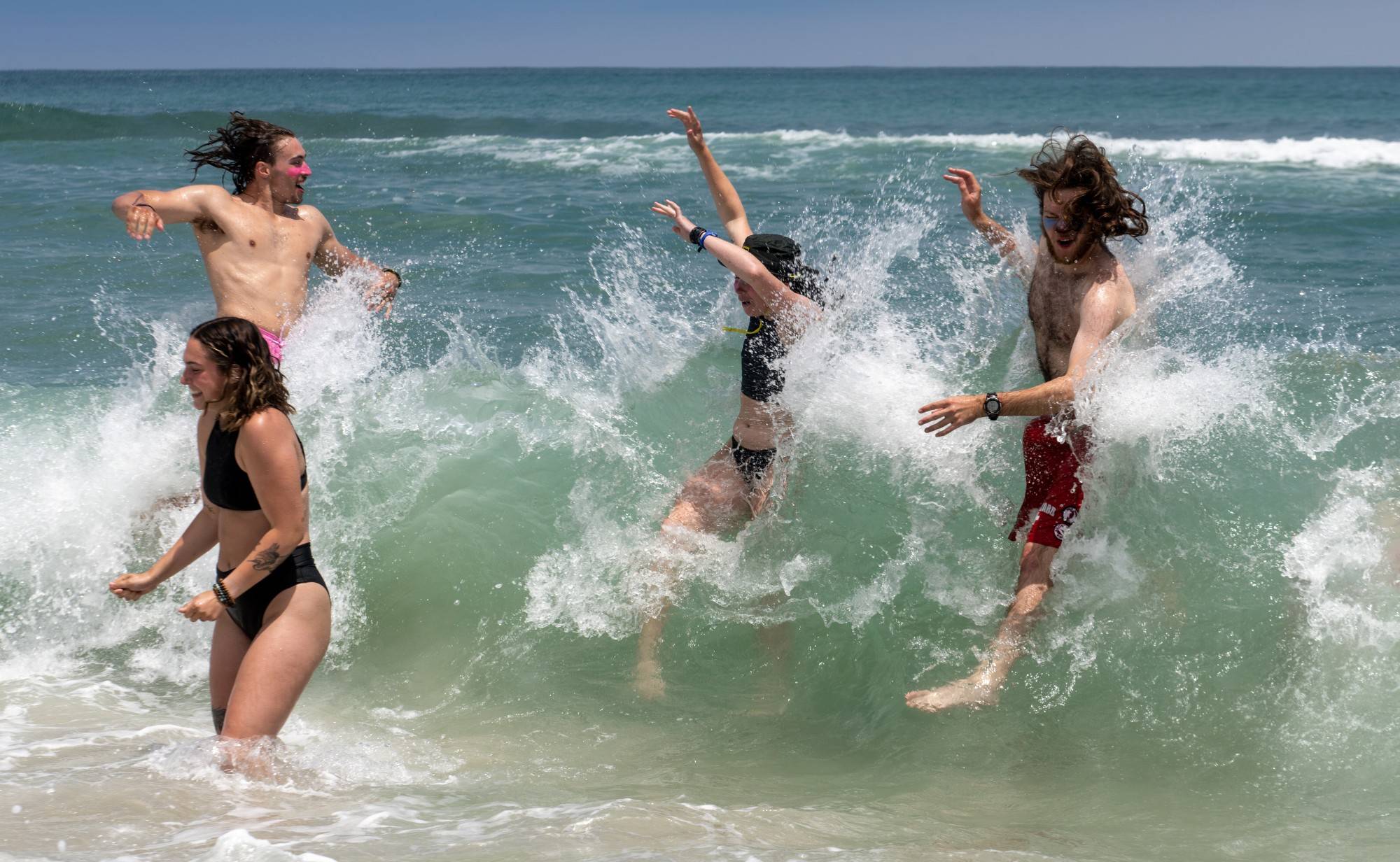
Students enjoy a swim in the ocean near Cape Lookout Lighthouse.
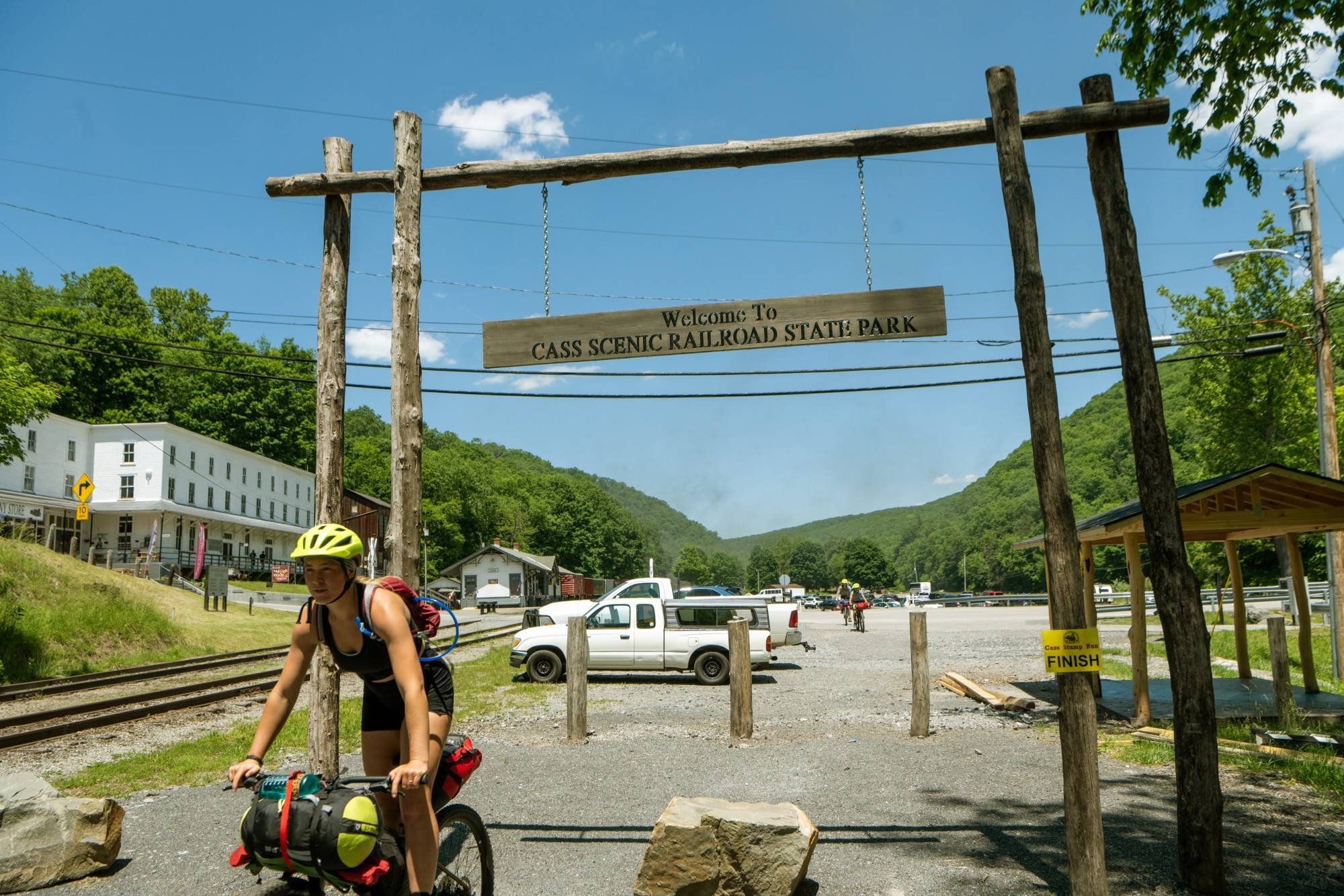
Autumn Warren begins the final activity, bike-packing on the Greenbrier Trail in West Virginia.
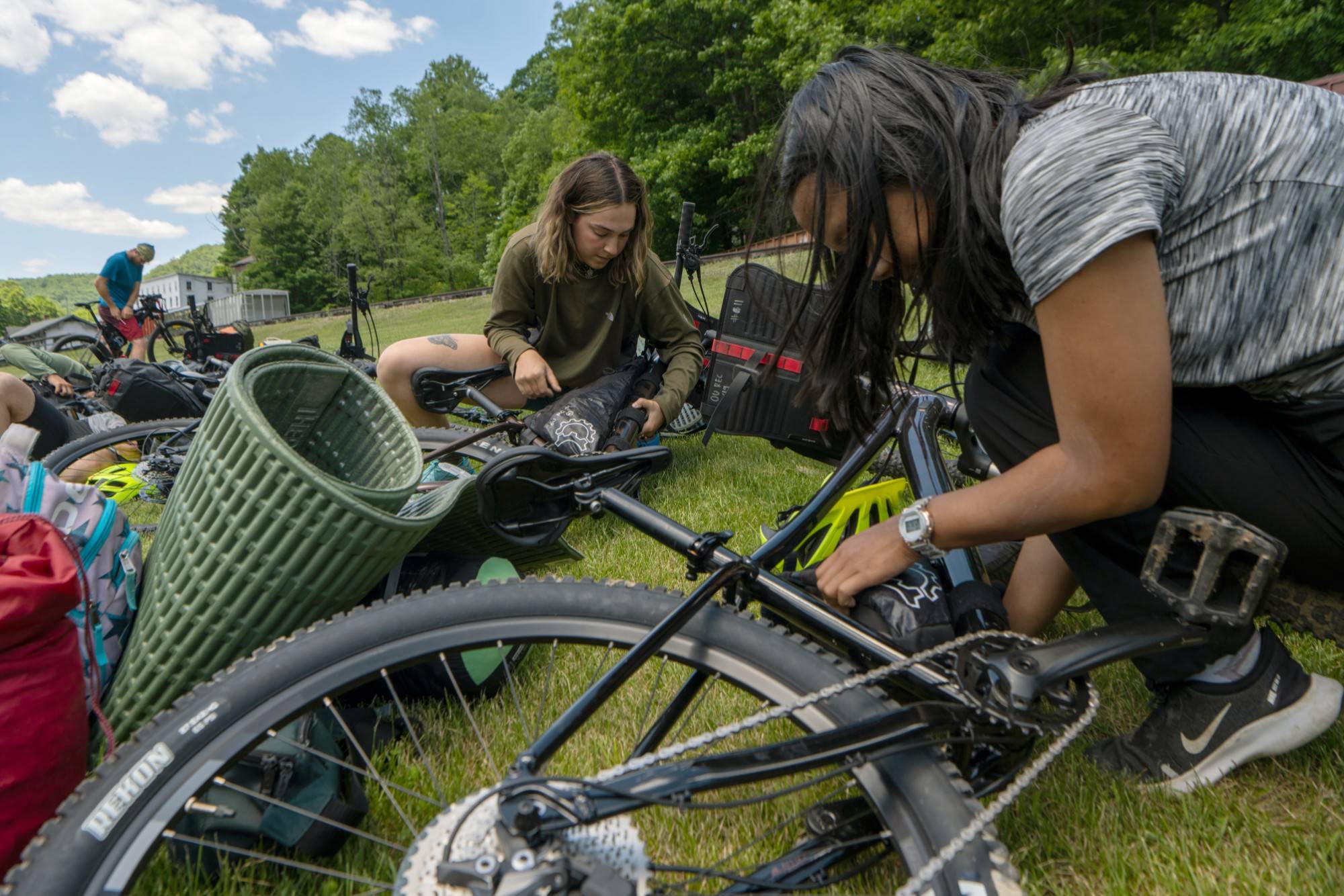
Autumn Warren (left) and Maya Snyder install bike-packing gear on their mountain bikes.
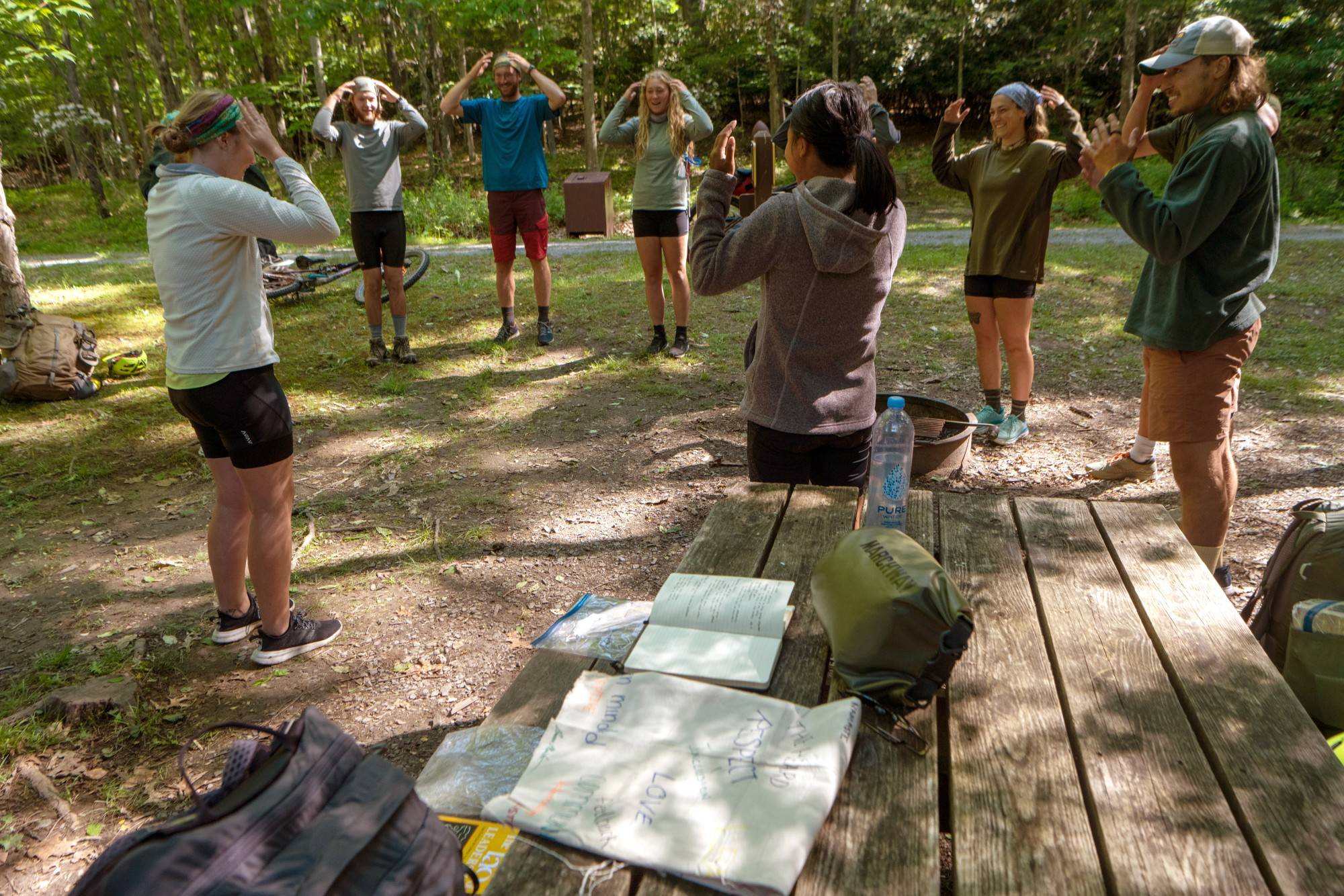
Anna Hattemer, in her role as leader of the day, leads the group in an early morning team building activity.
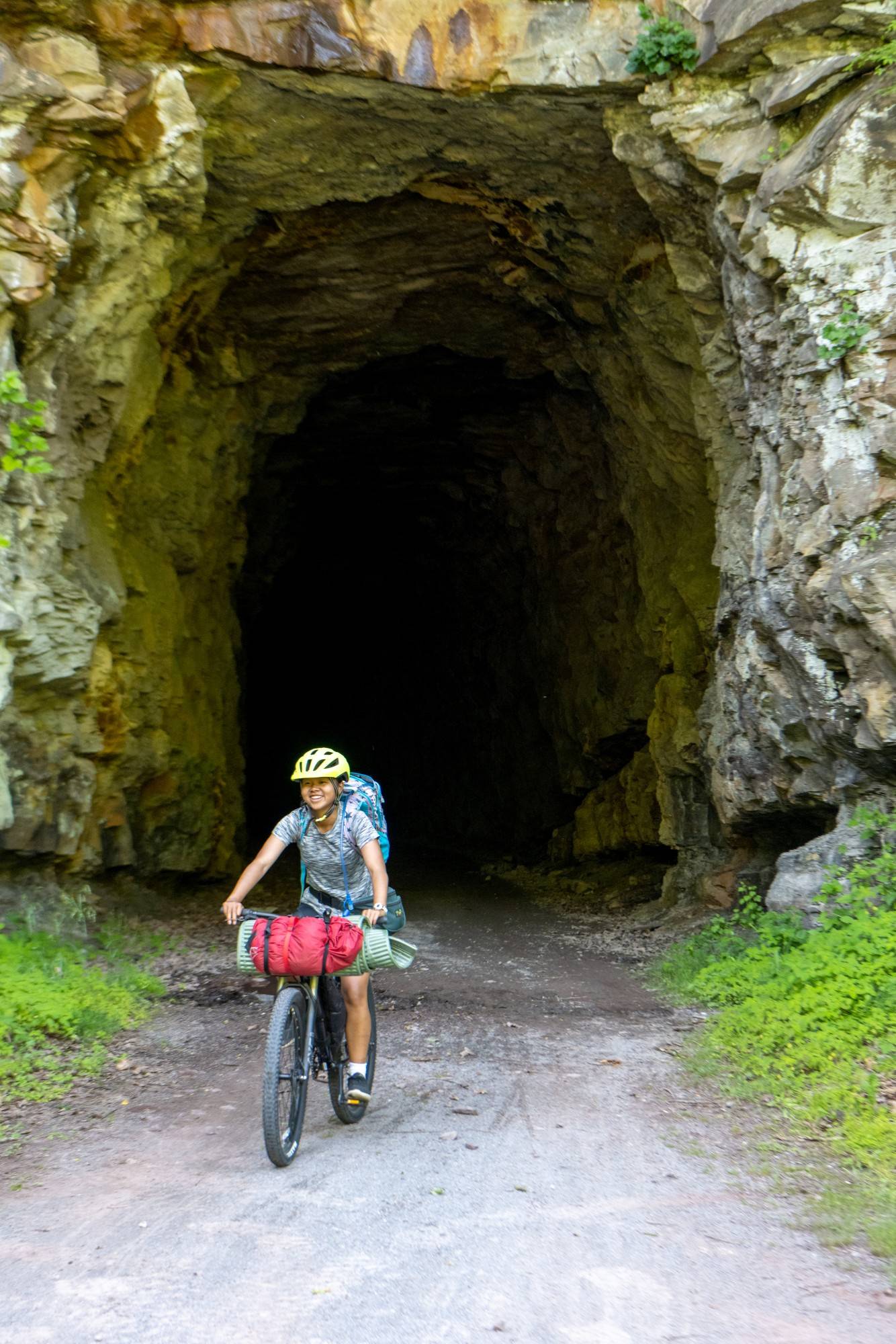
Maya Snyder bikes through a tunnel on the Greenbrier Rail Trail in Southern West Virginia.
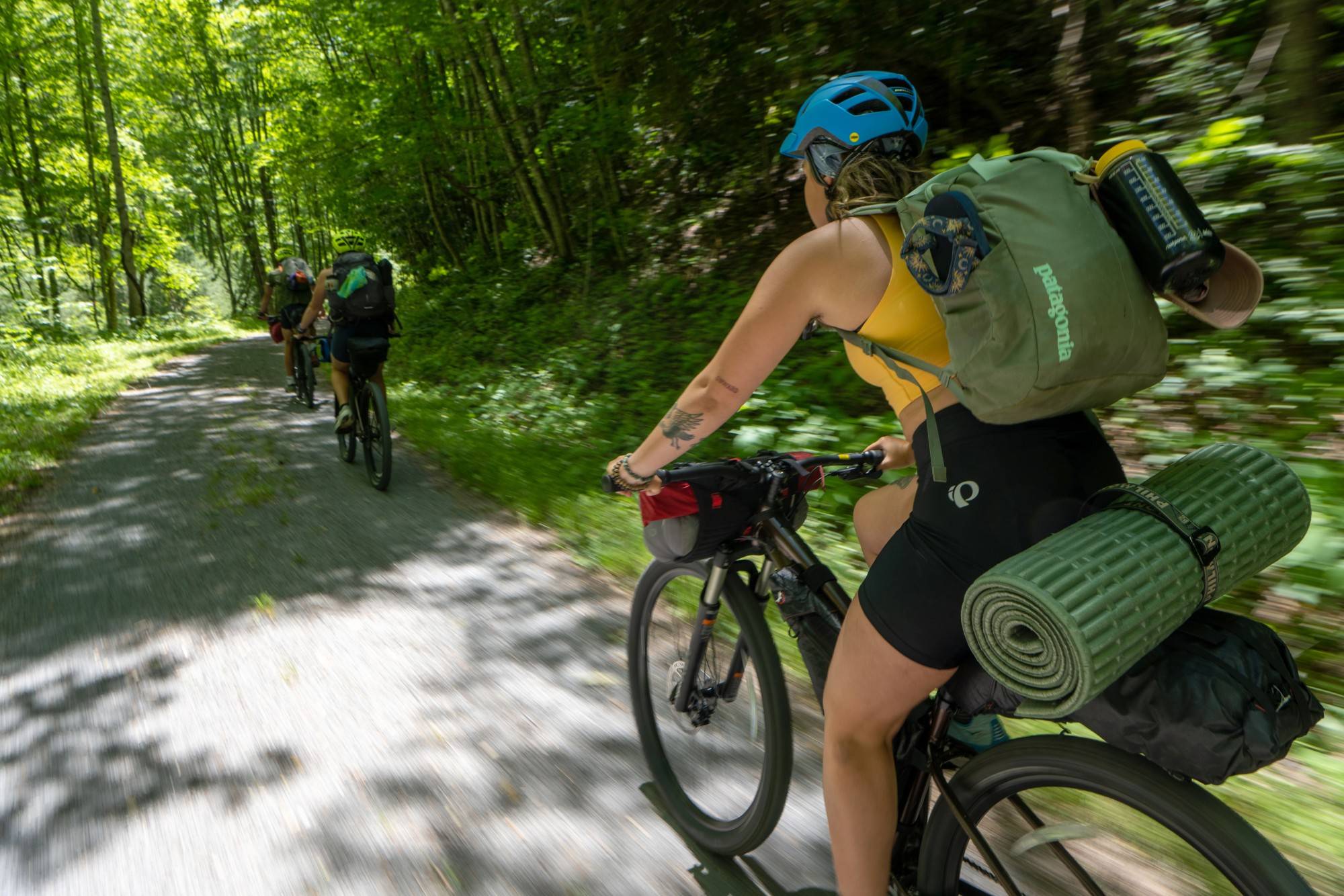
Students camped for six nights in the Monongahela National Forest in West Virginia on the final part of their outdoor leadership course.
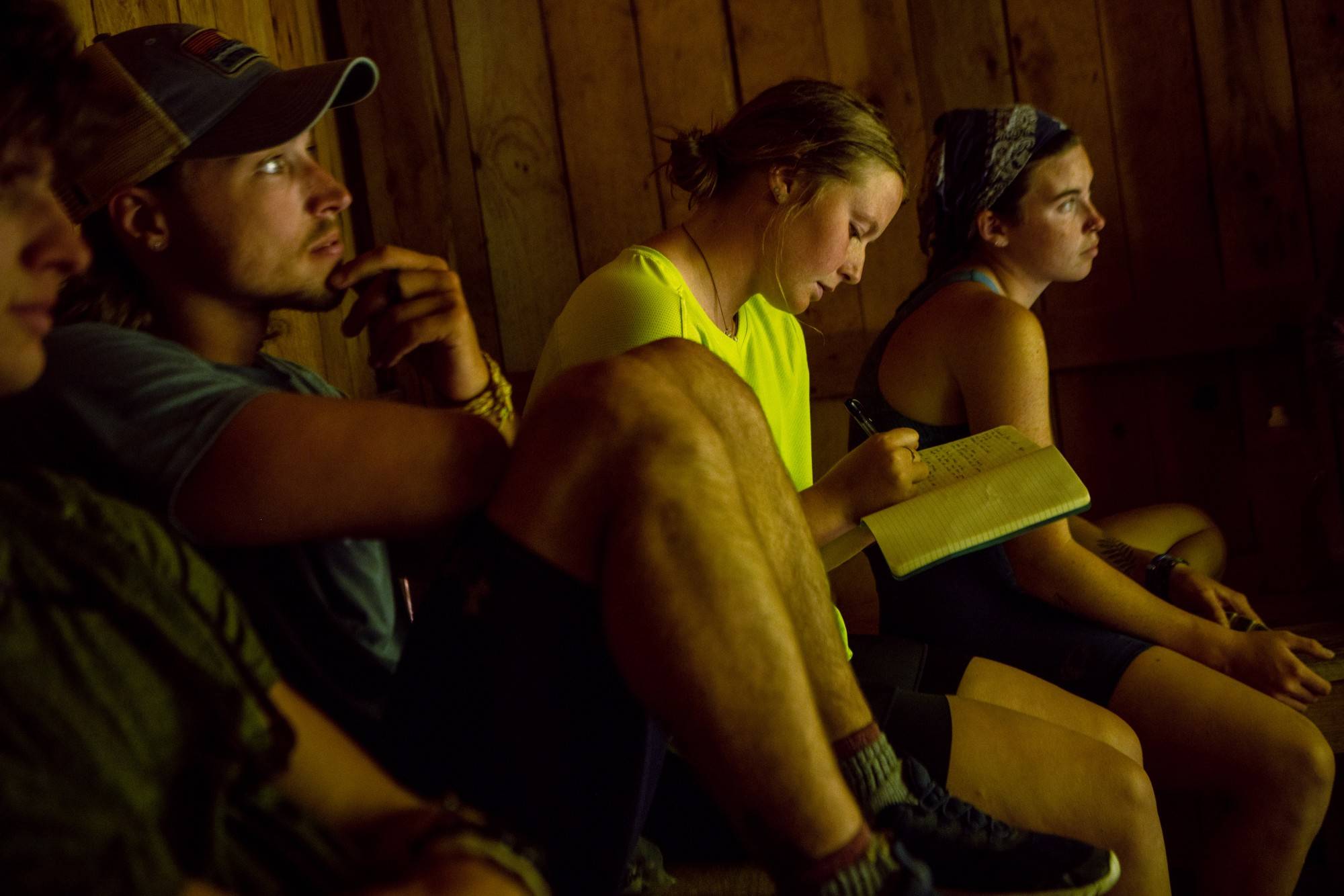
Anna Hattemer takes notes during a student-led lesson following a lunch break on the trail.
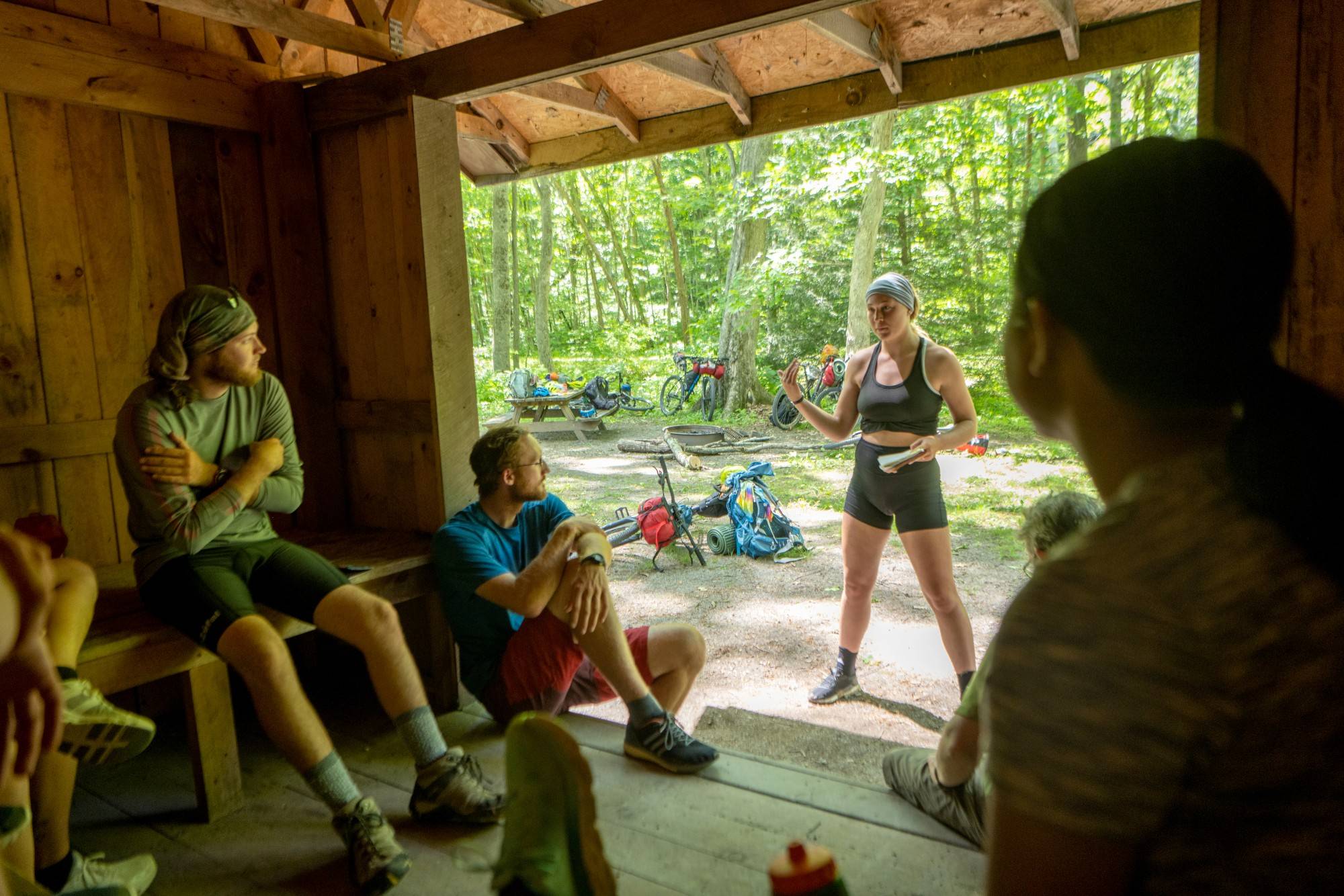
Reagan Berg teaches a lesson about the environmental stewardship following a lunch break on the Greenbrier Trail.
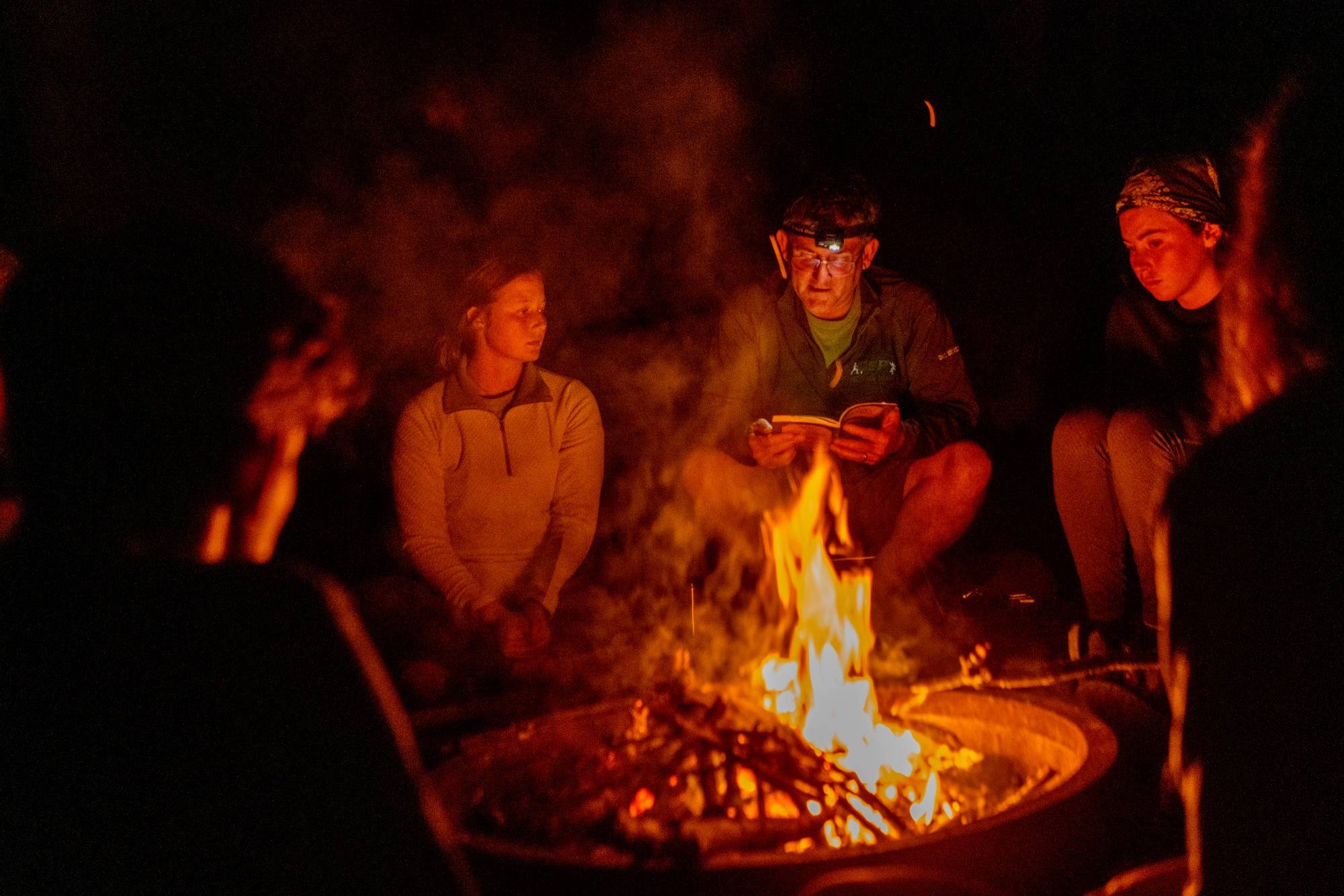
Bruce Martin, department chair of the Recreation, Sport Pedagogy and Consumer Sciences program, reads to the class around a campfire.
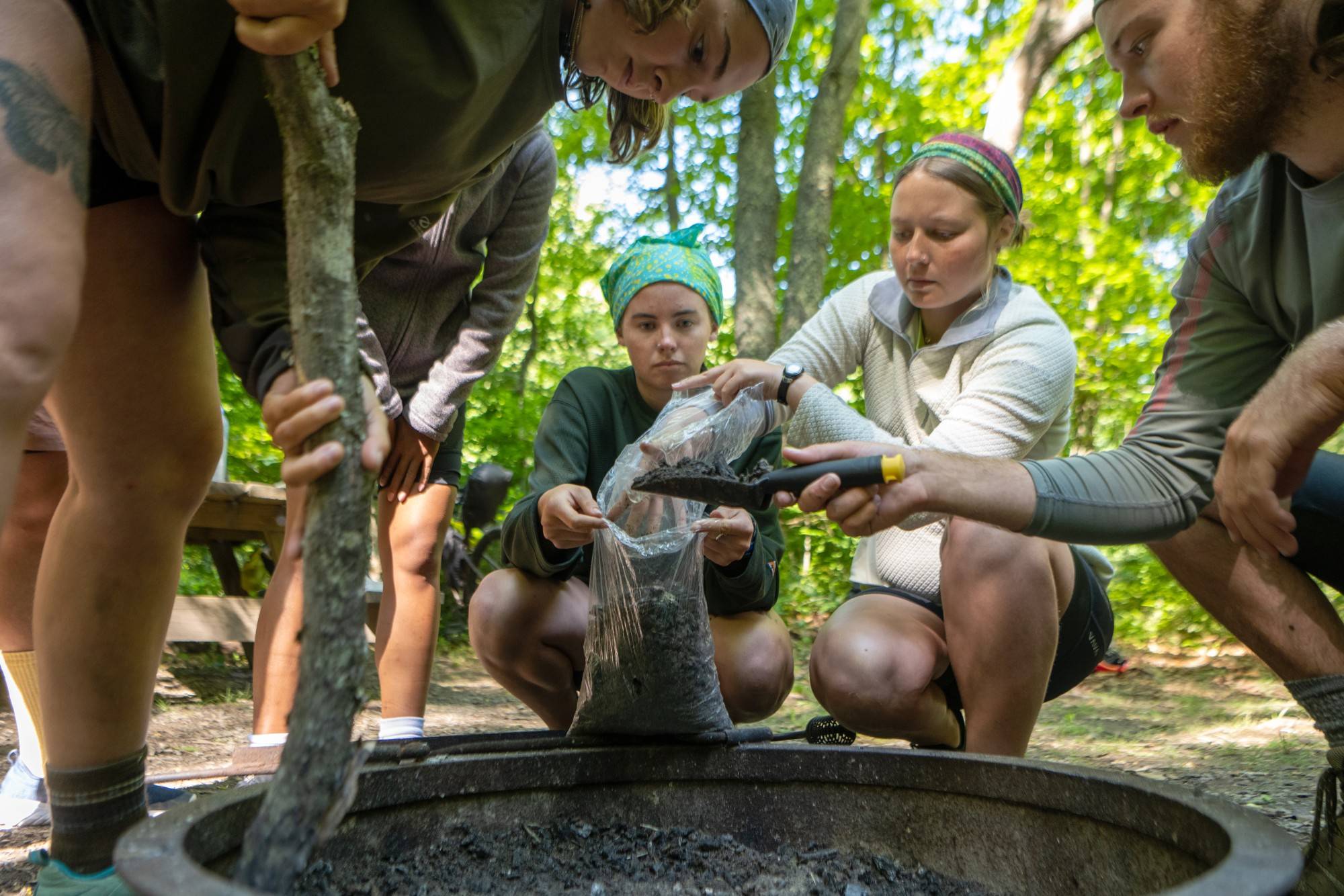
Students learn best practices for how to clean up a campfire.
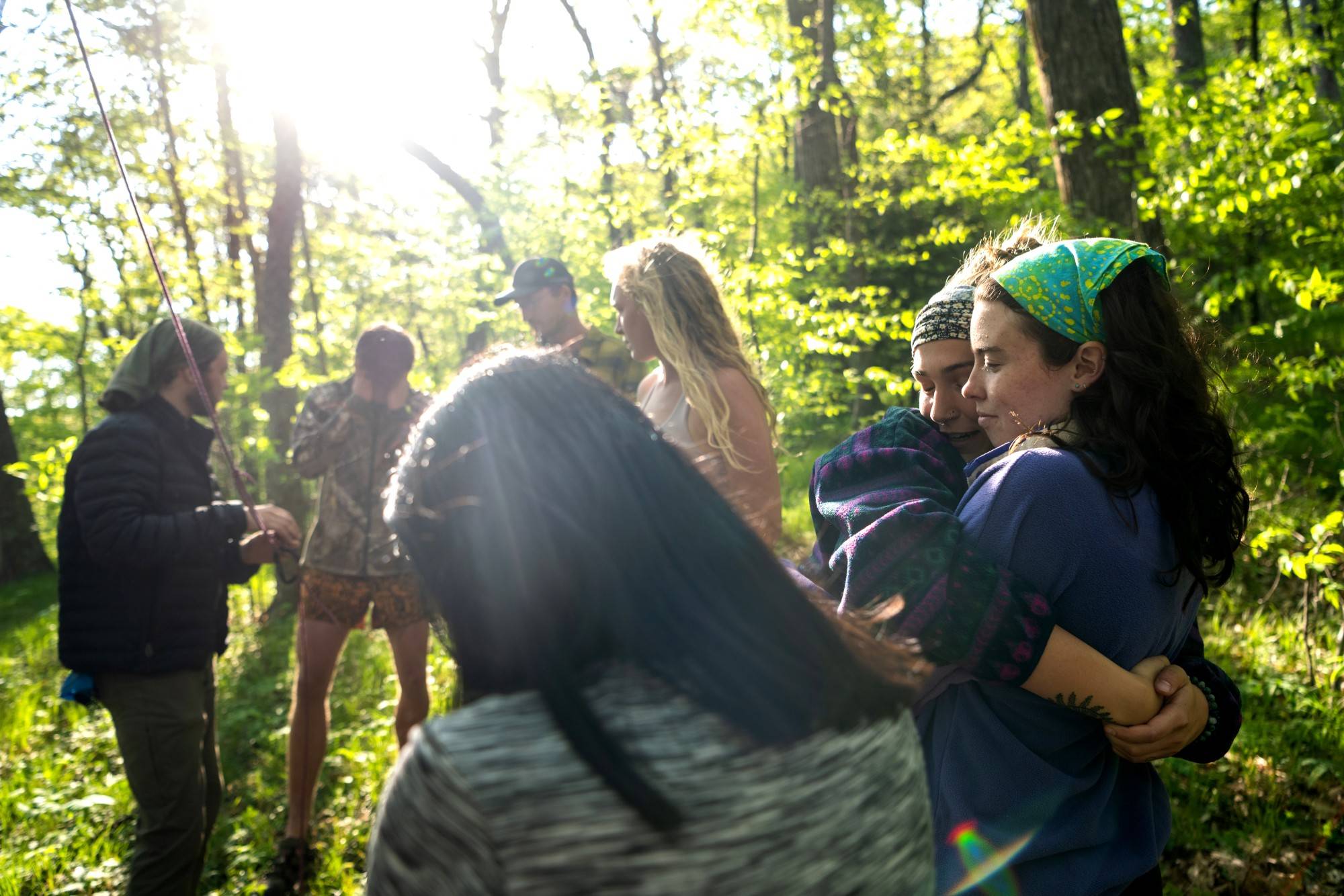
Autumn Warren (left) and Emelia Adams share a hug on the trail. The students grew close during the 28 days they spent together in the wilderness.

